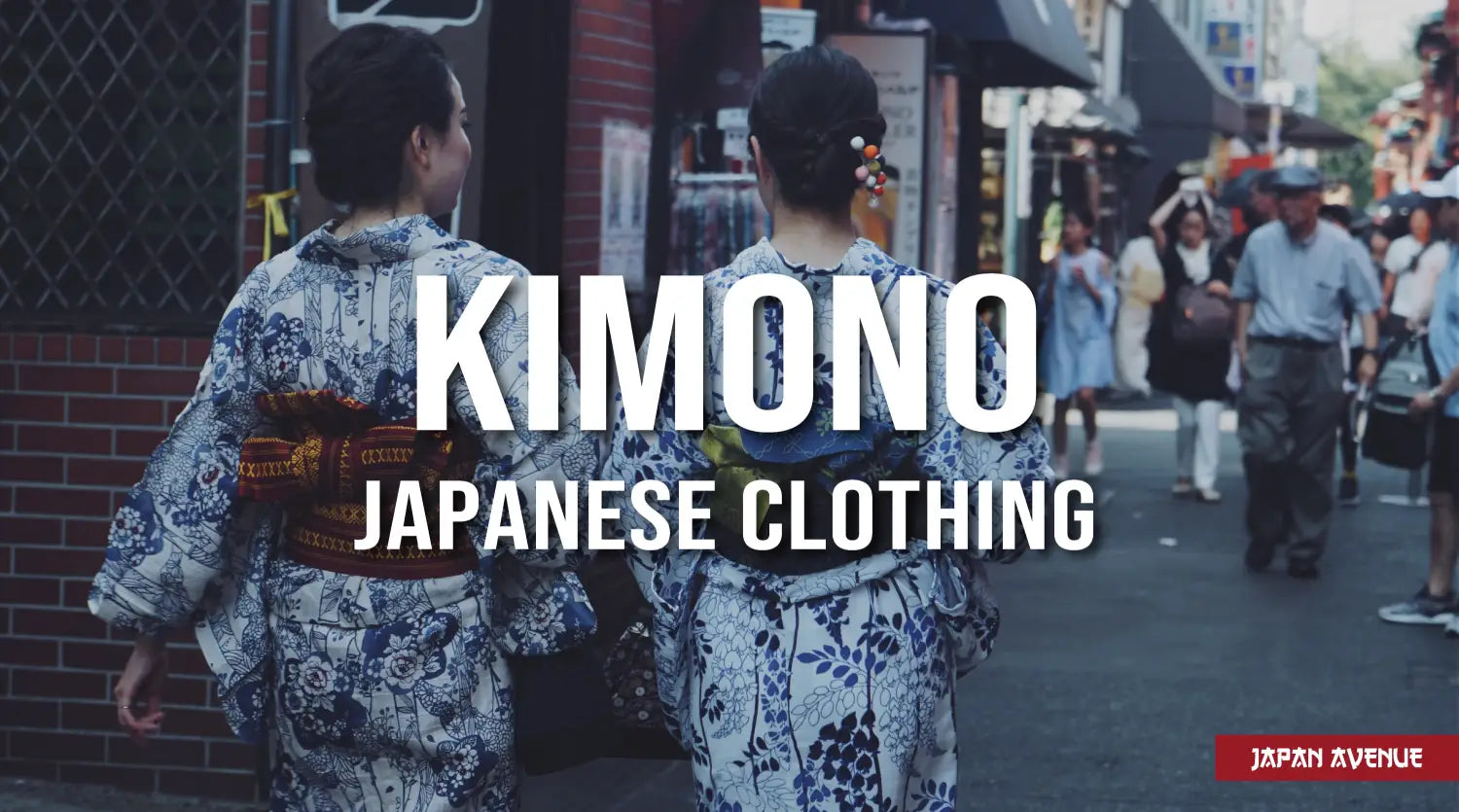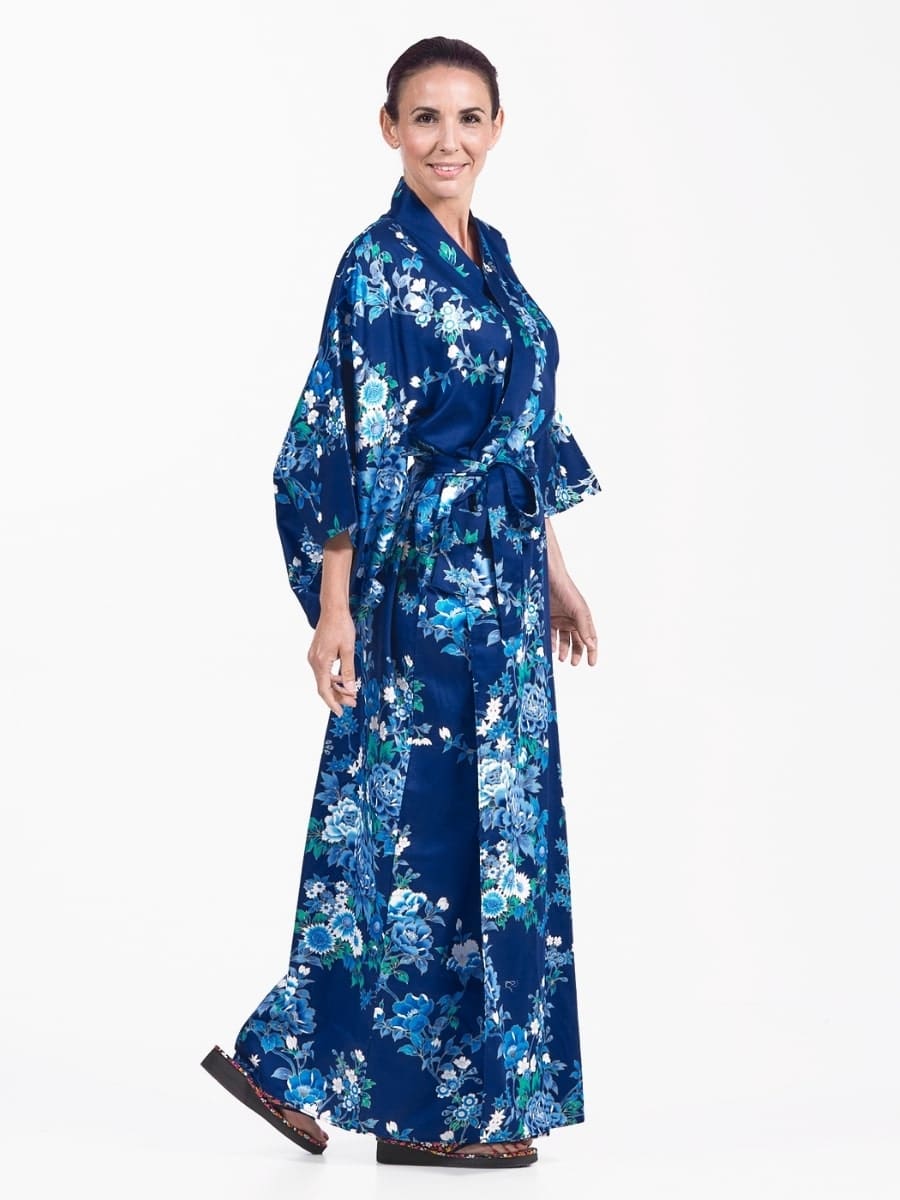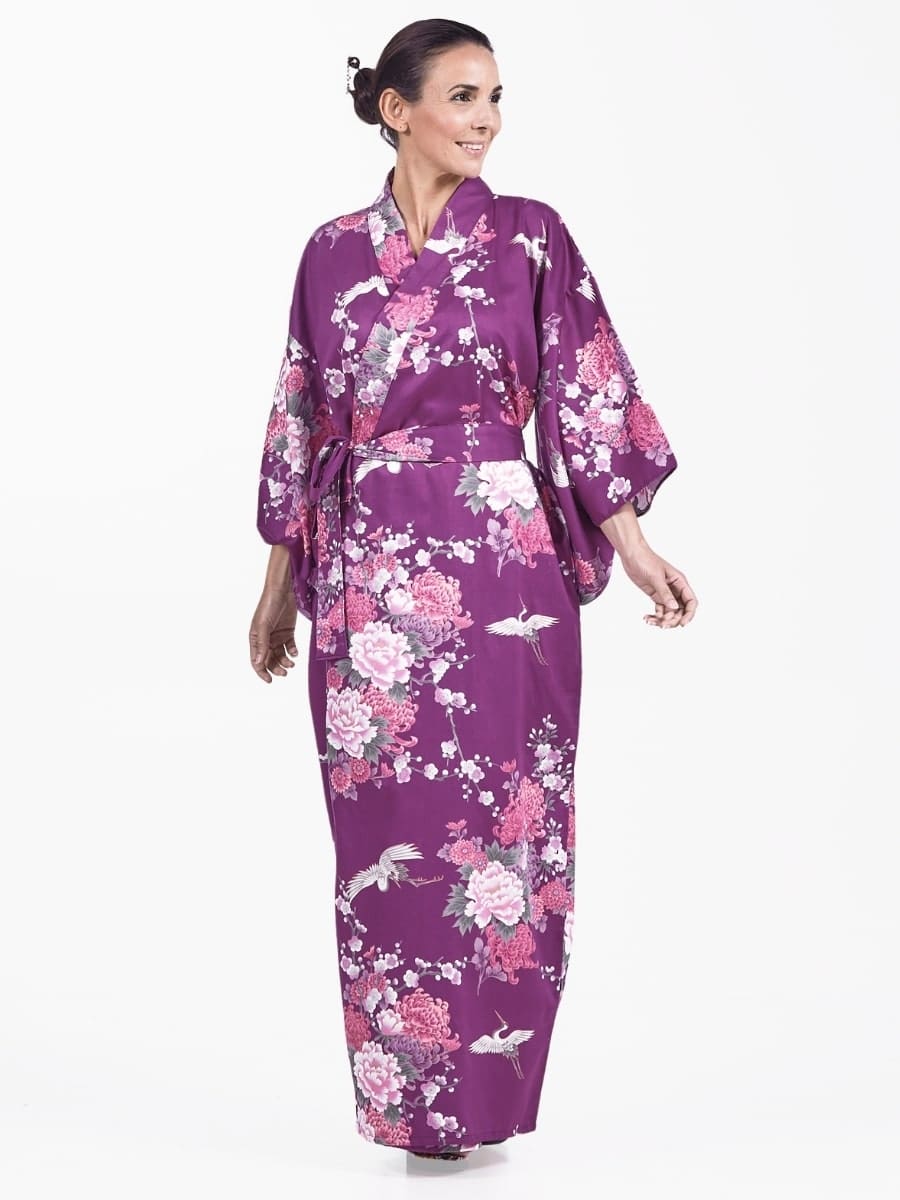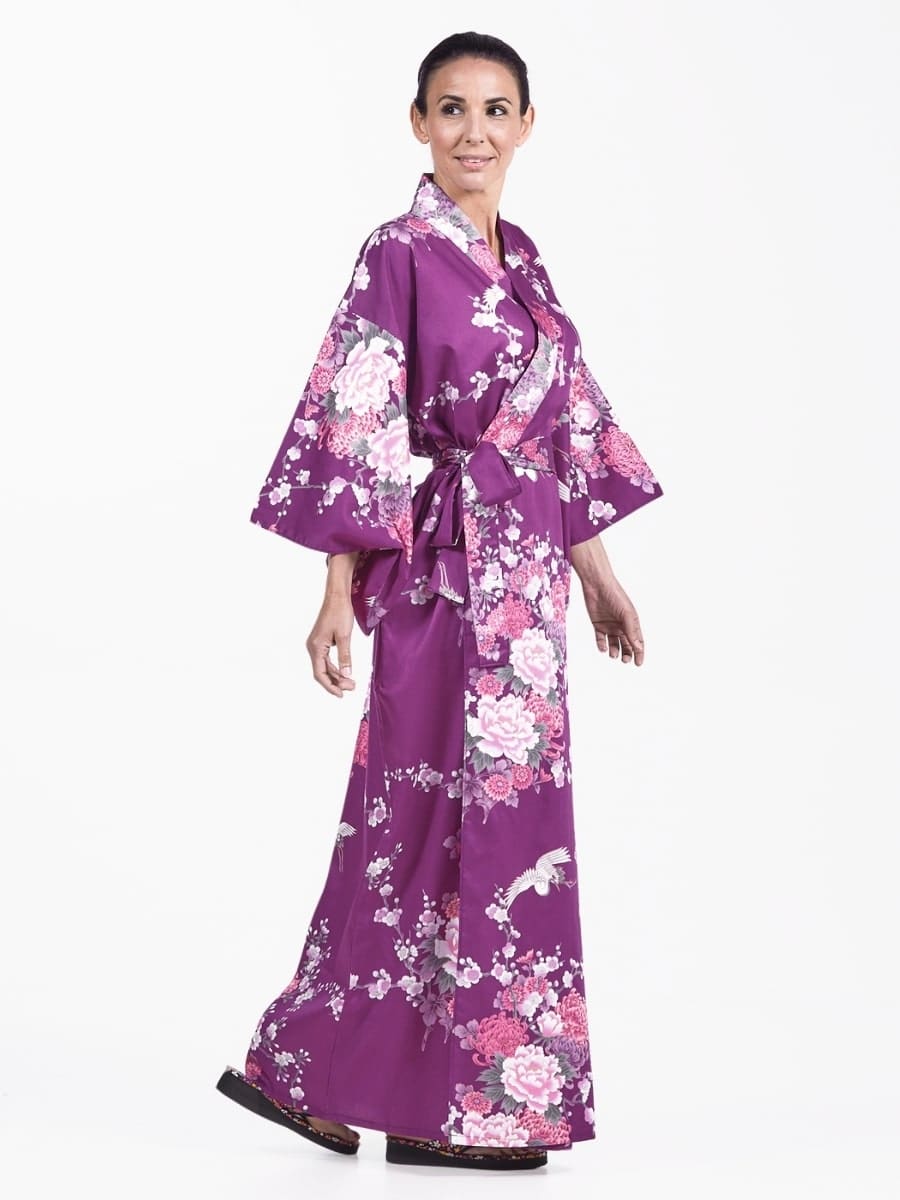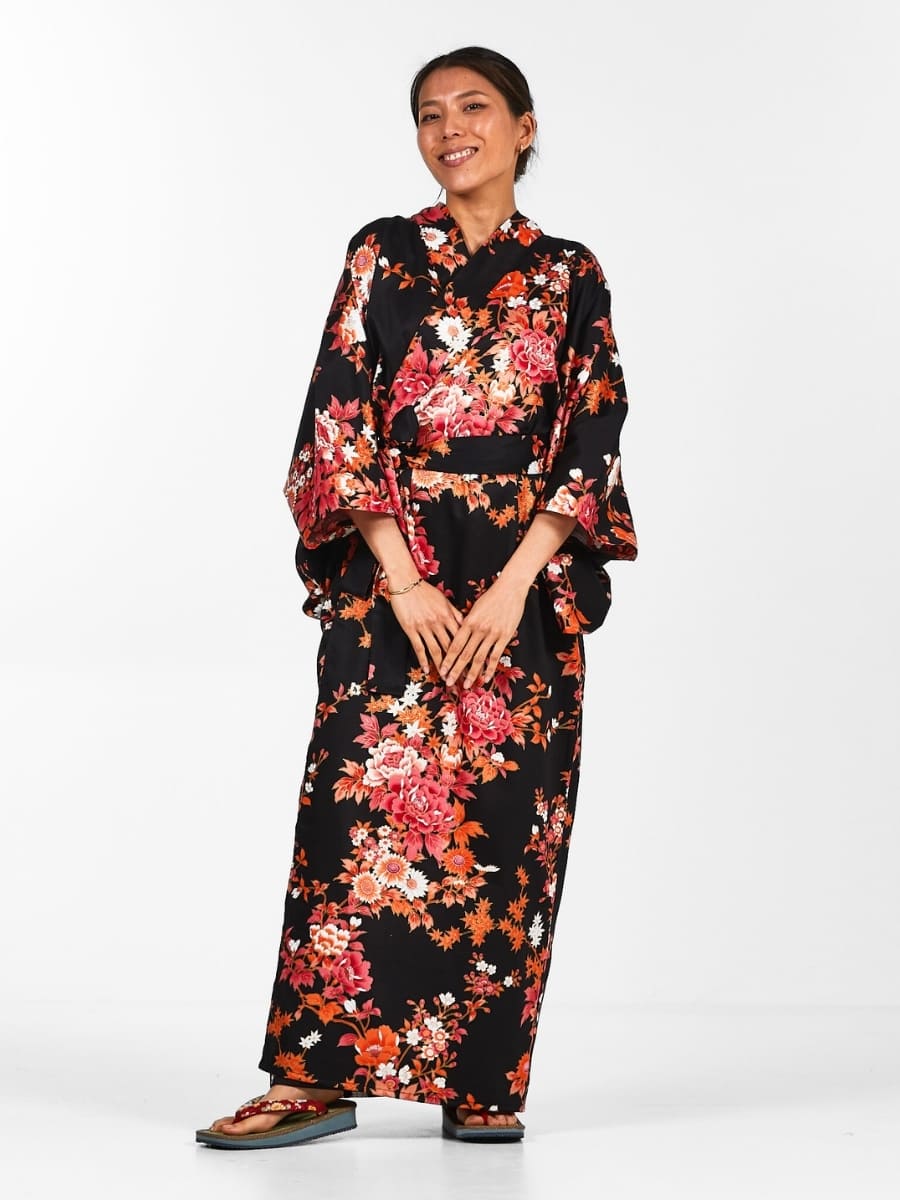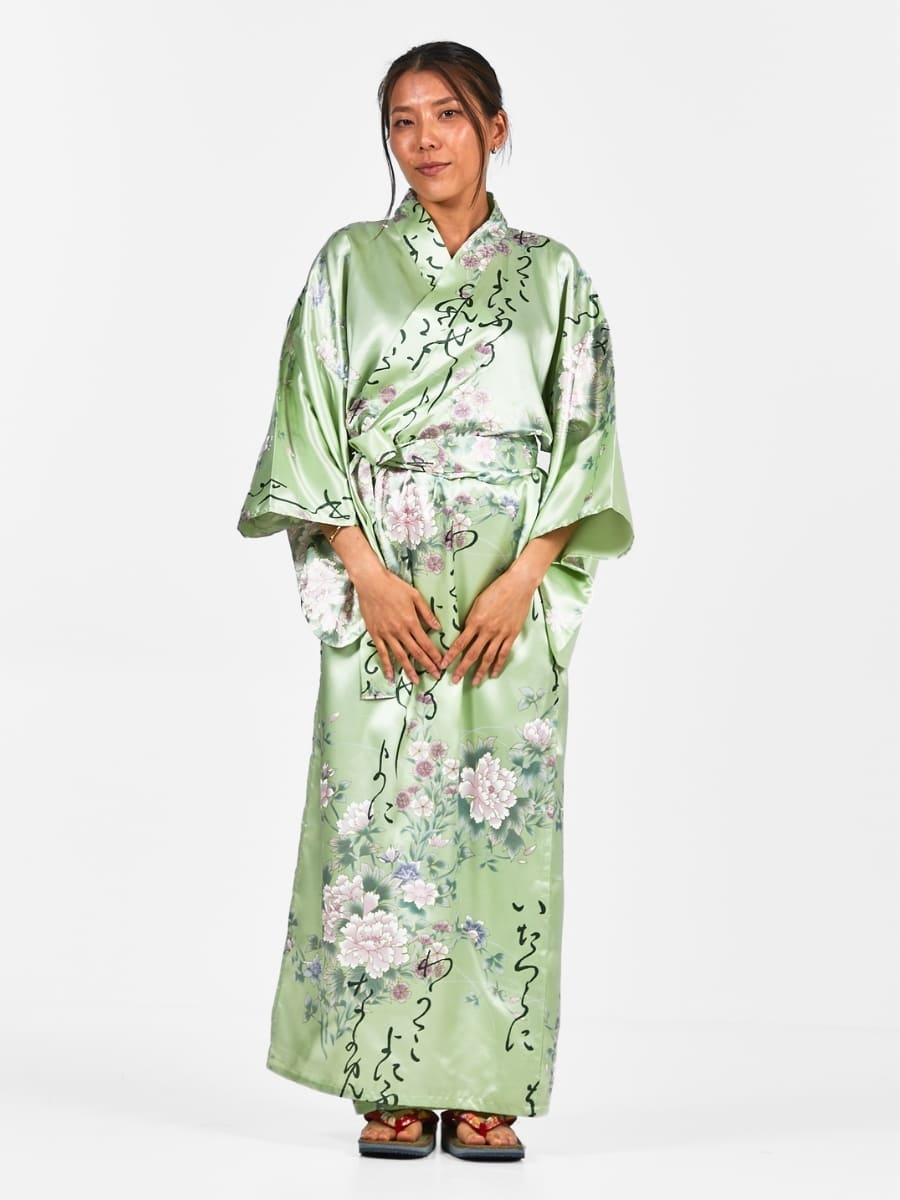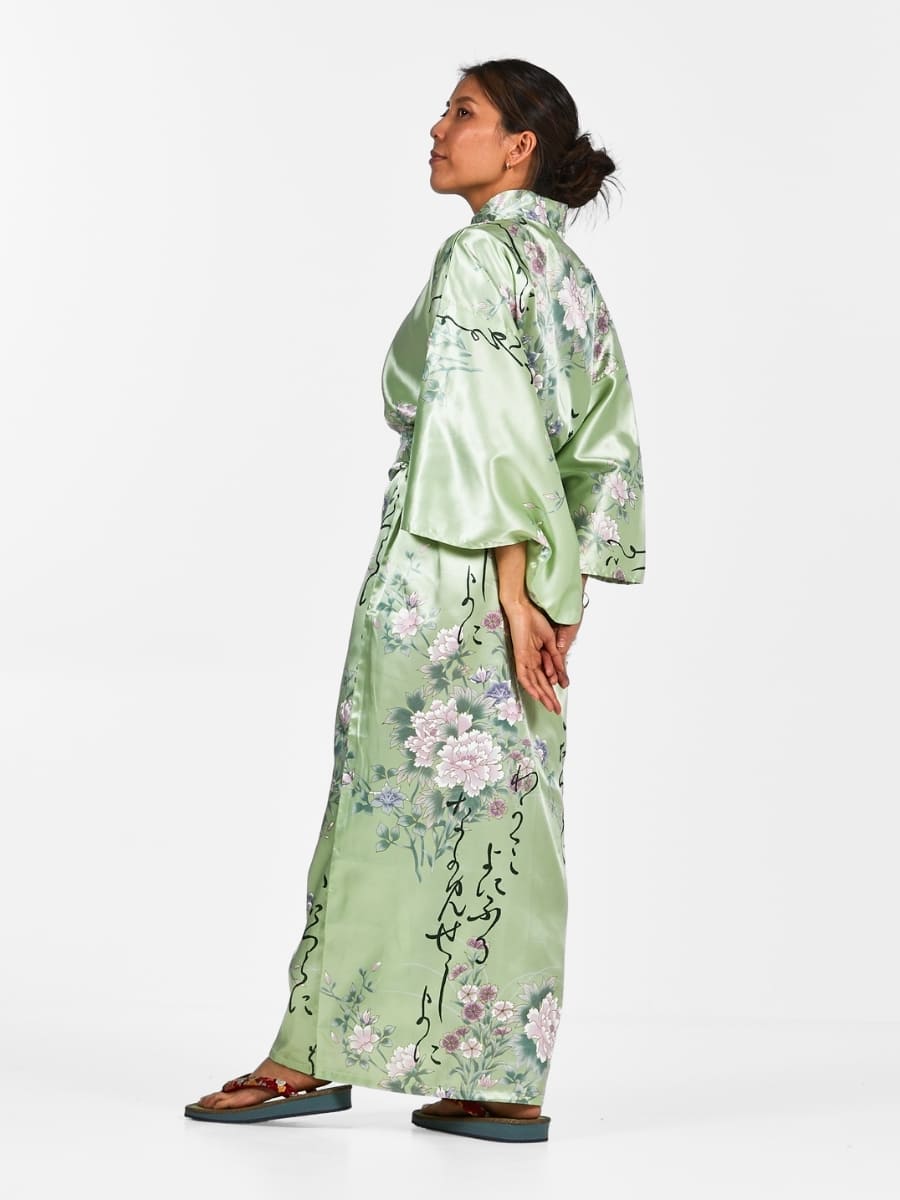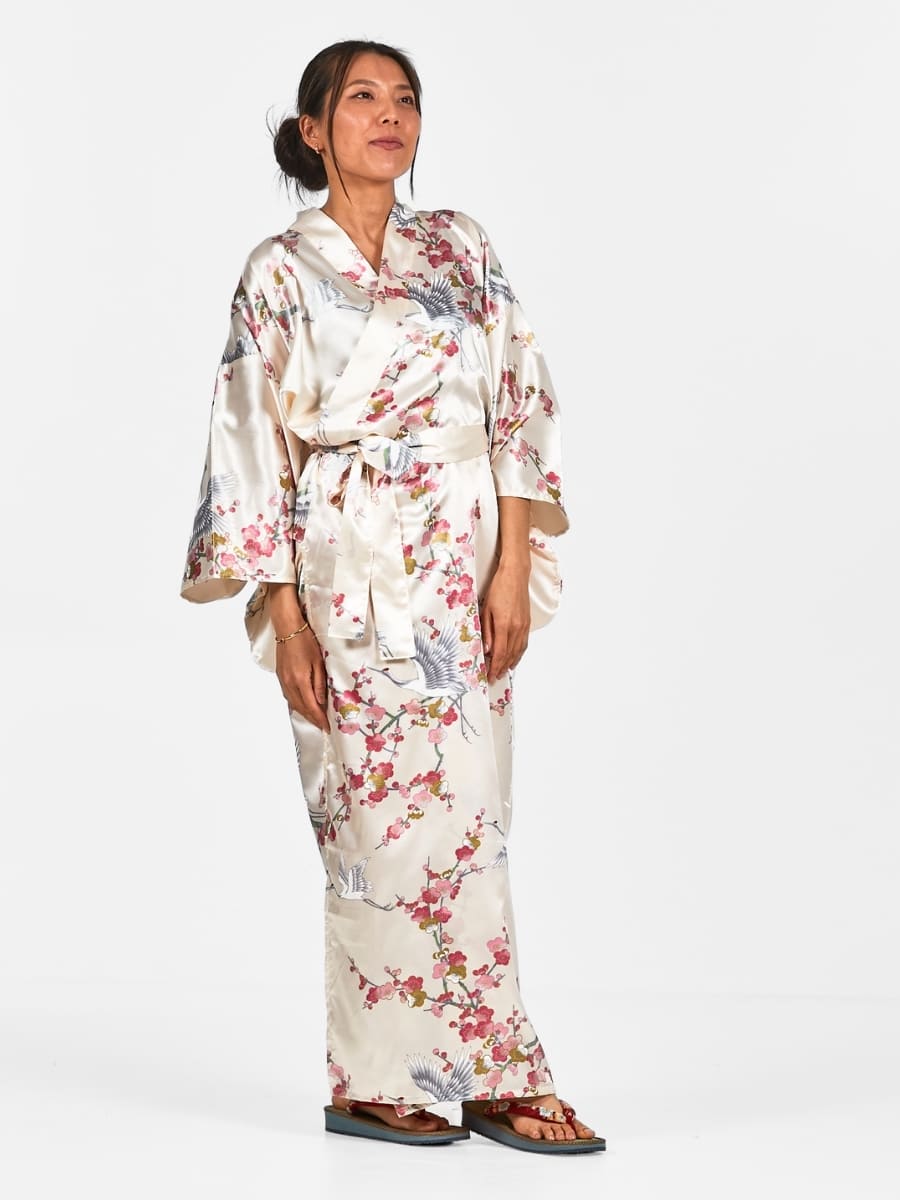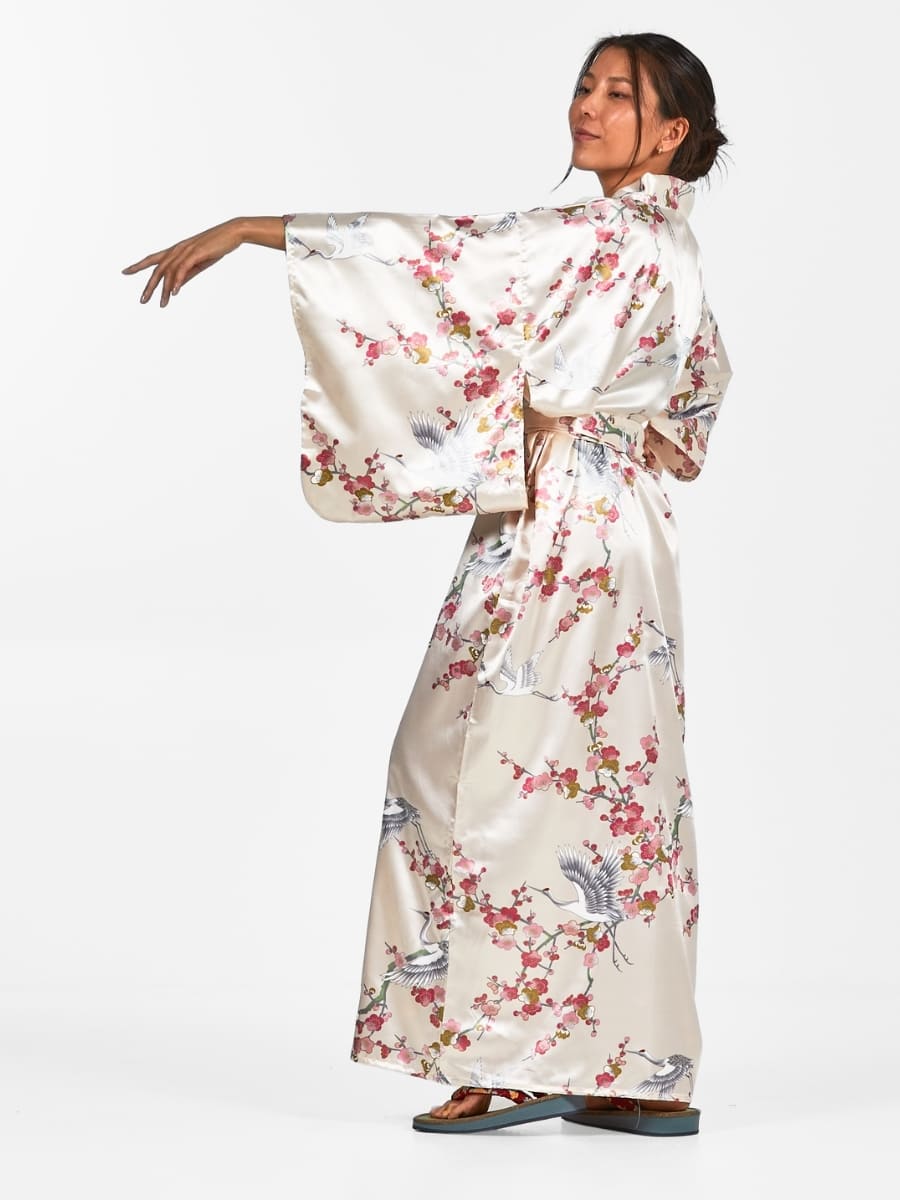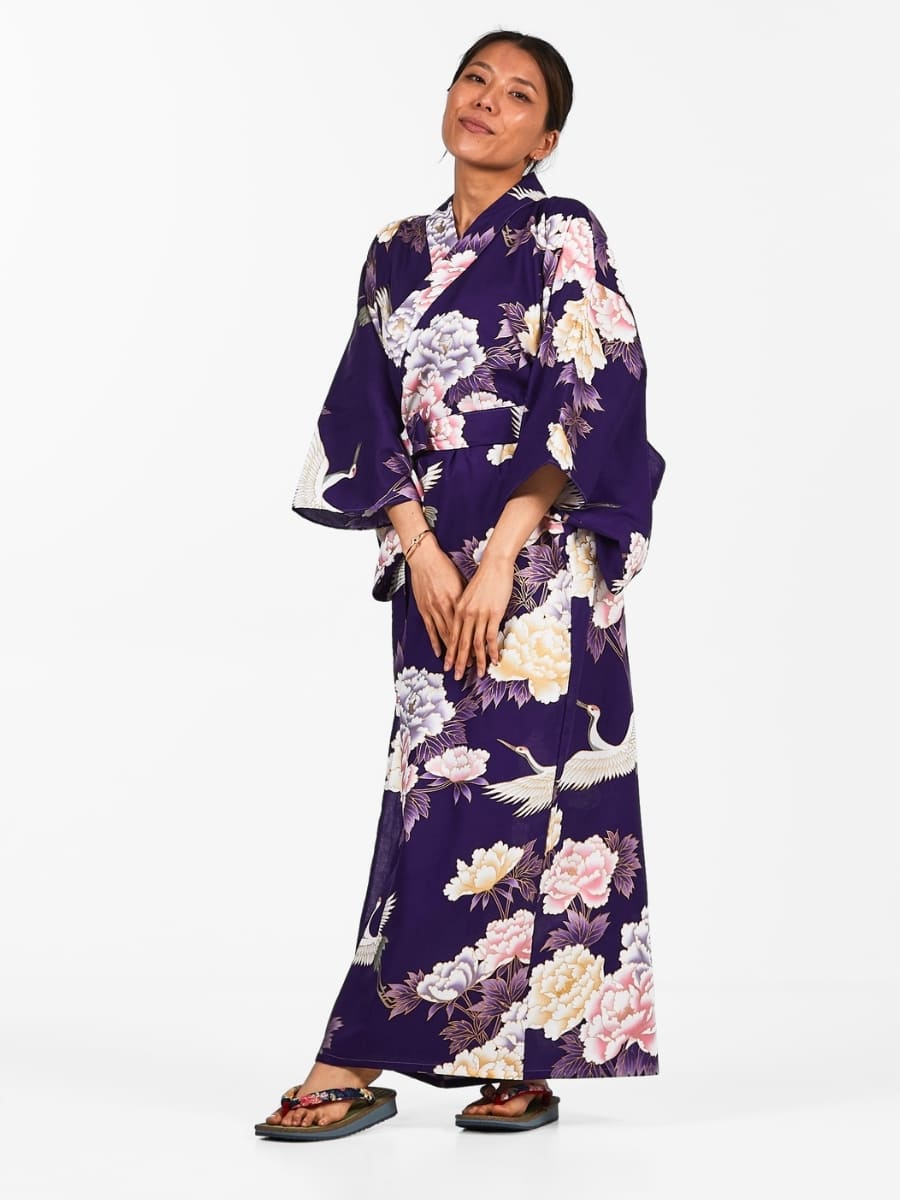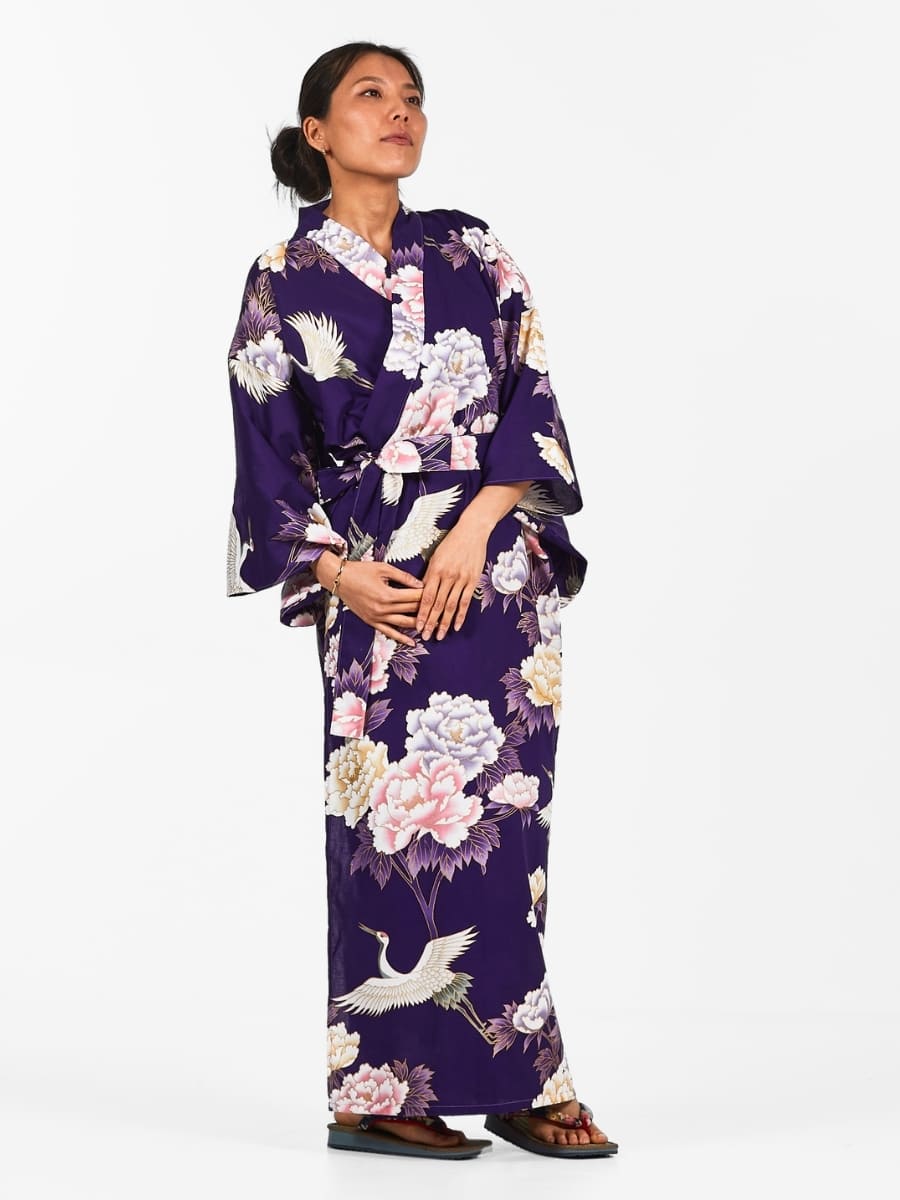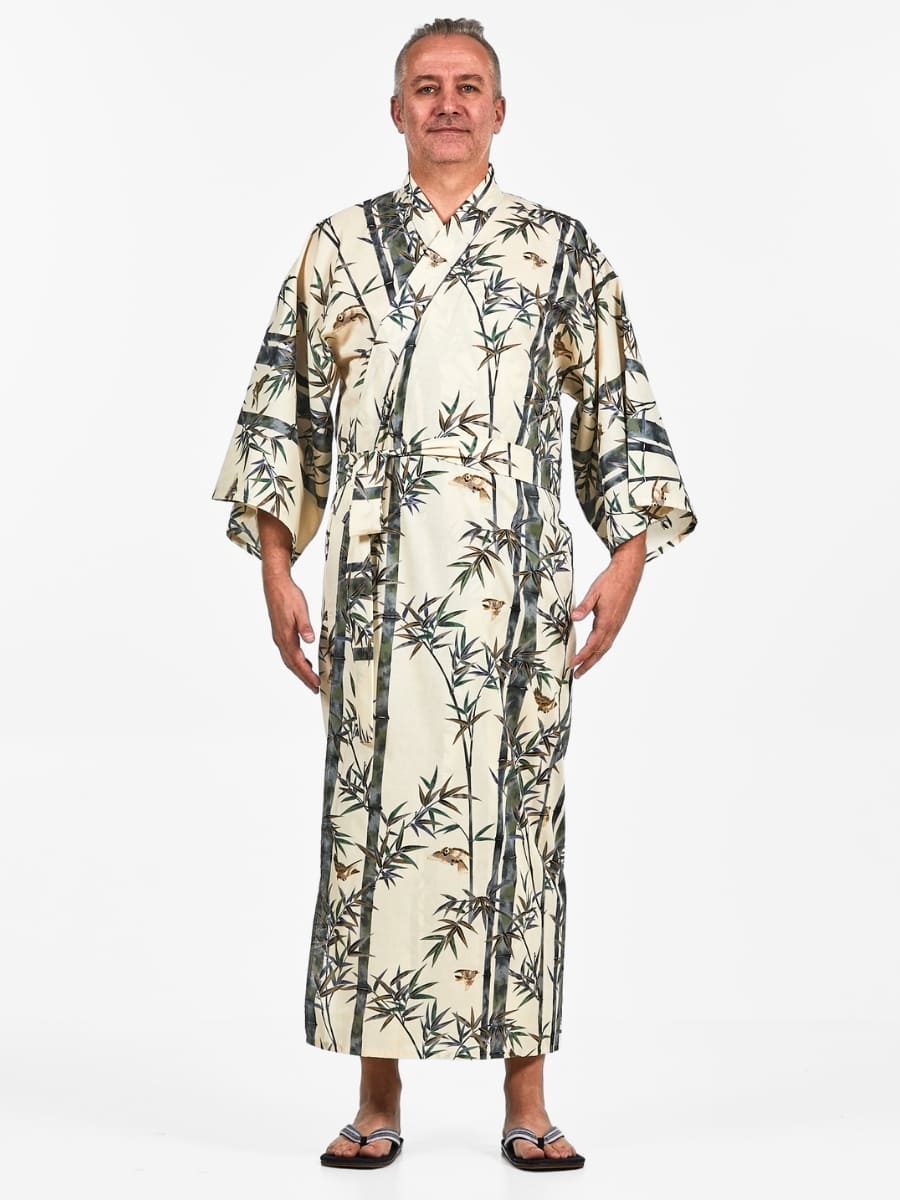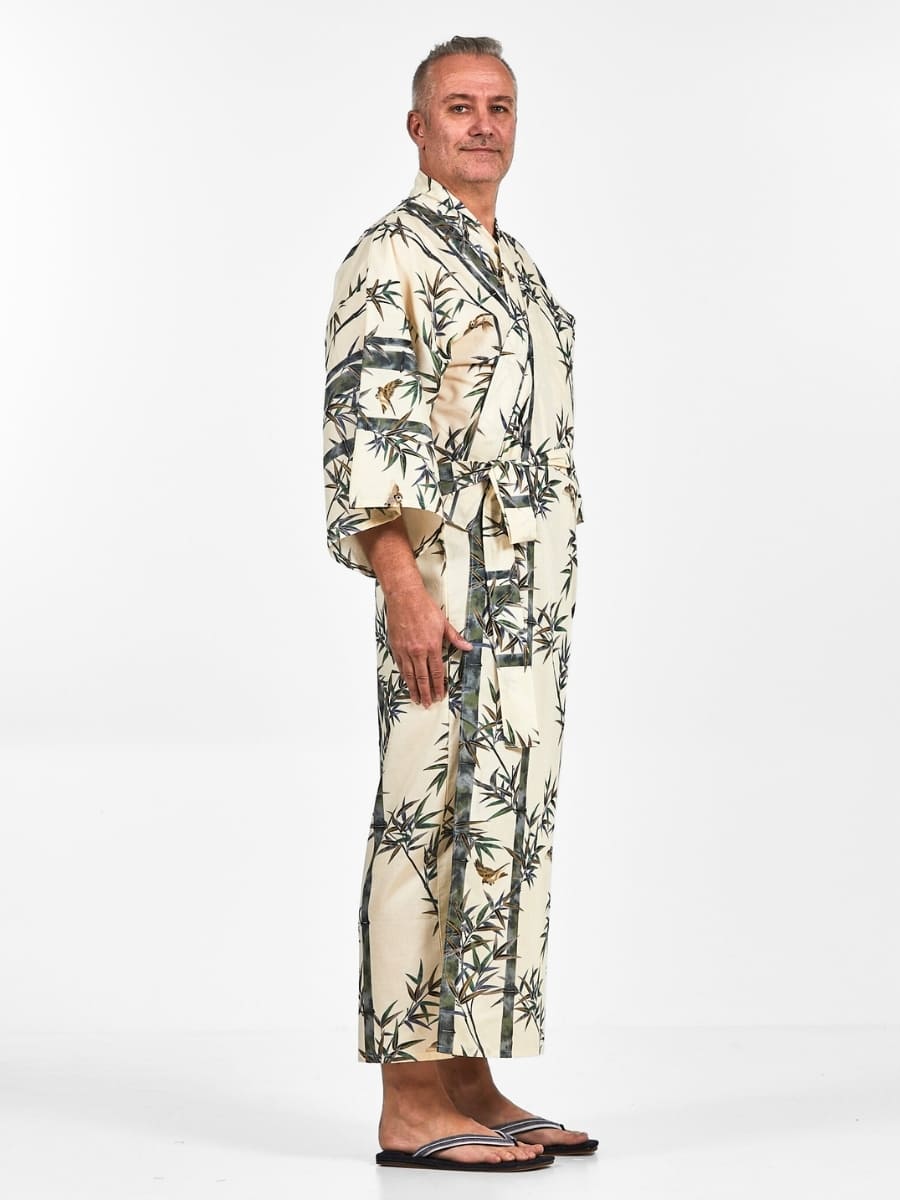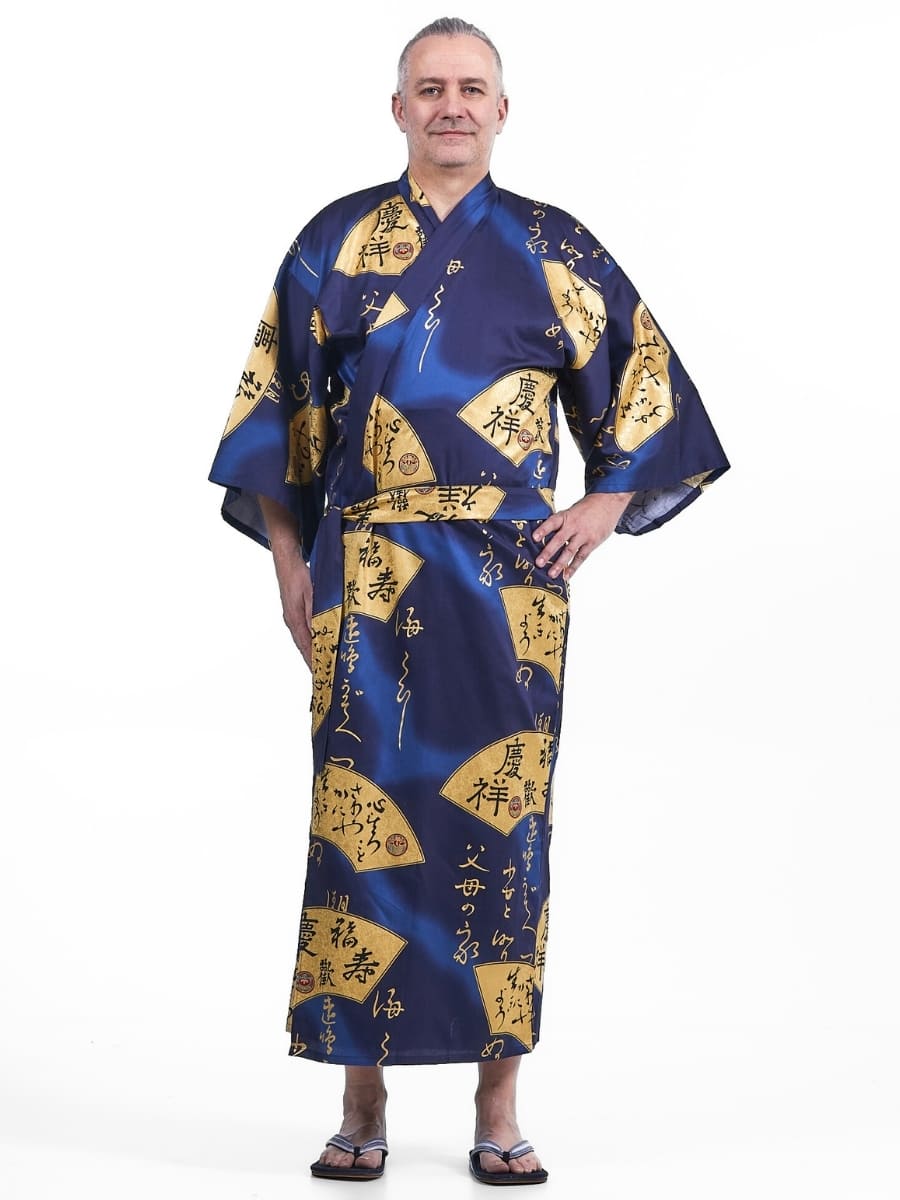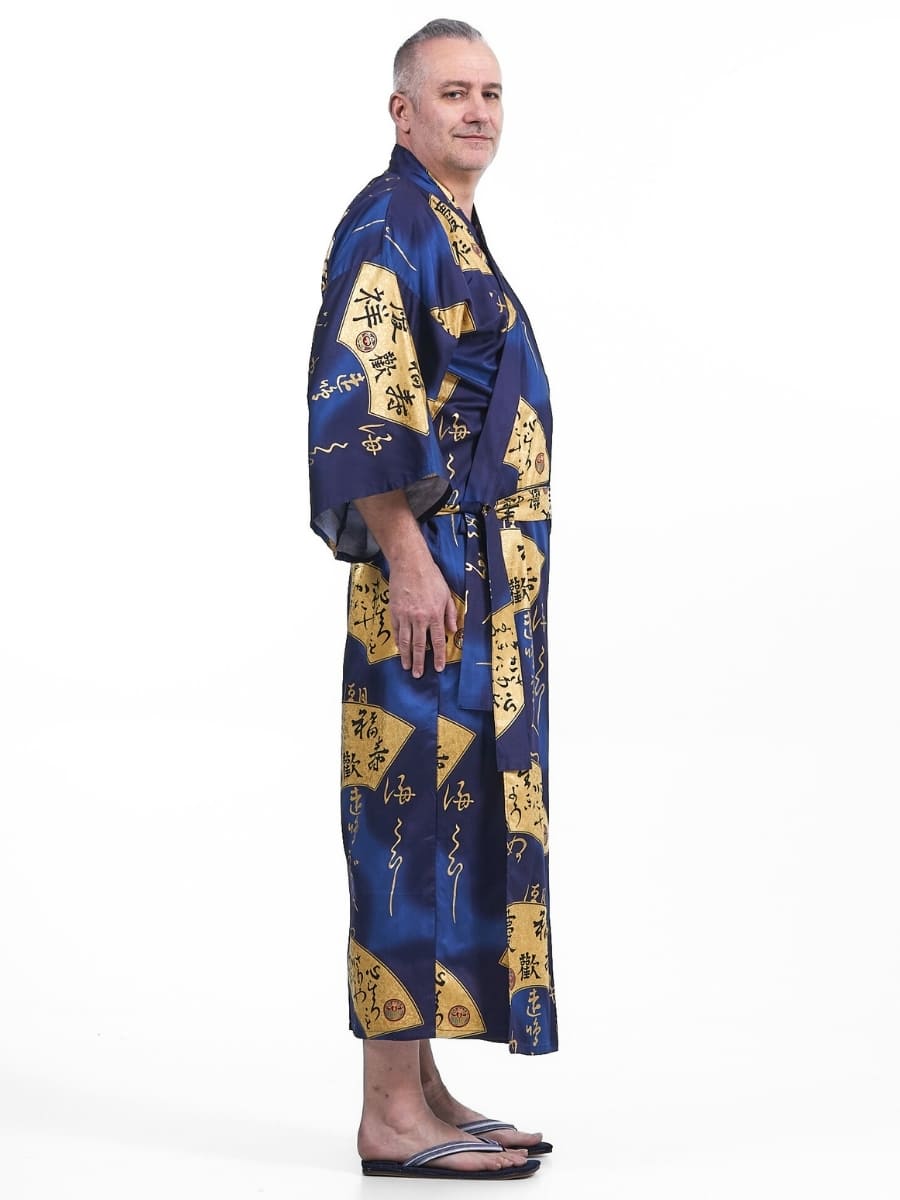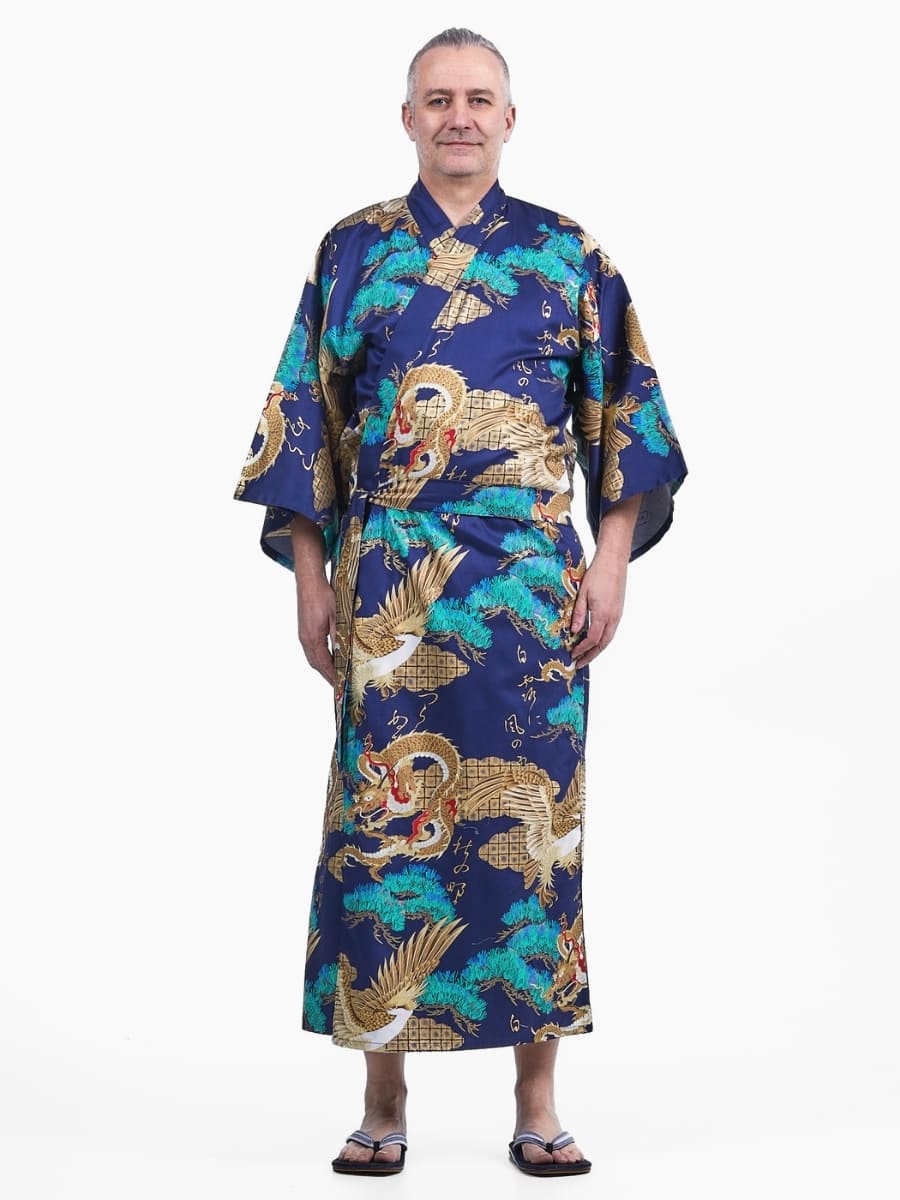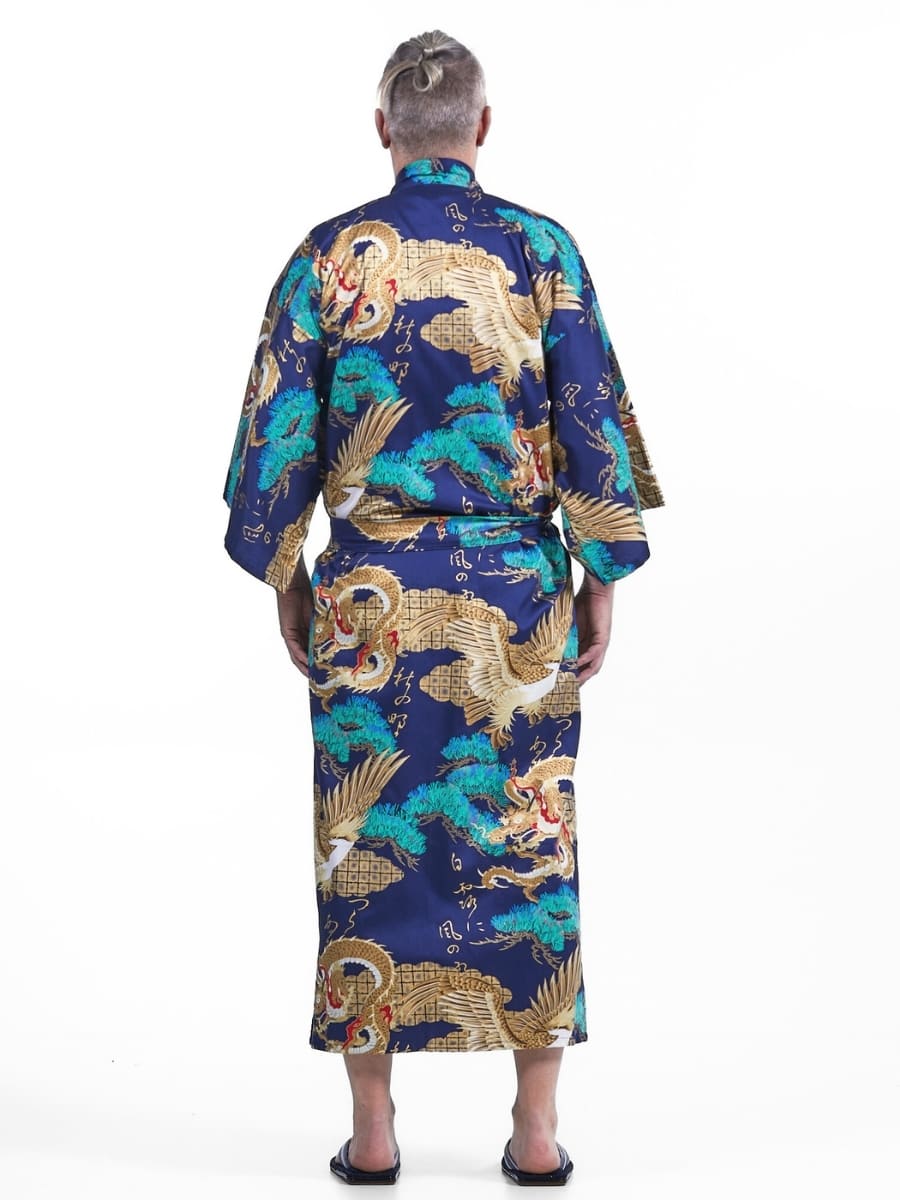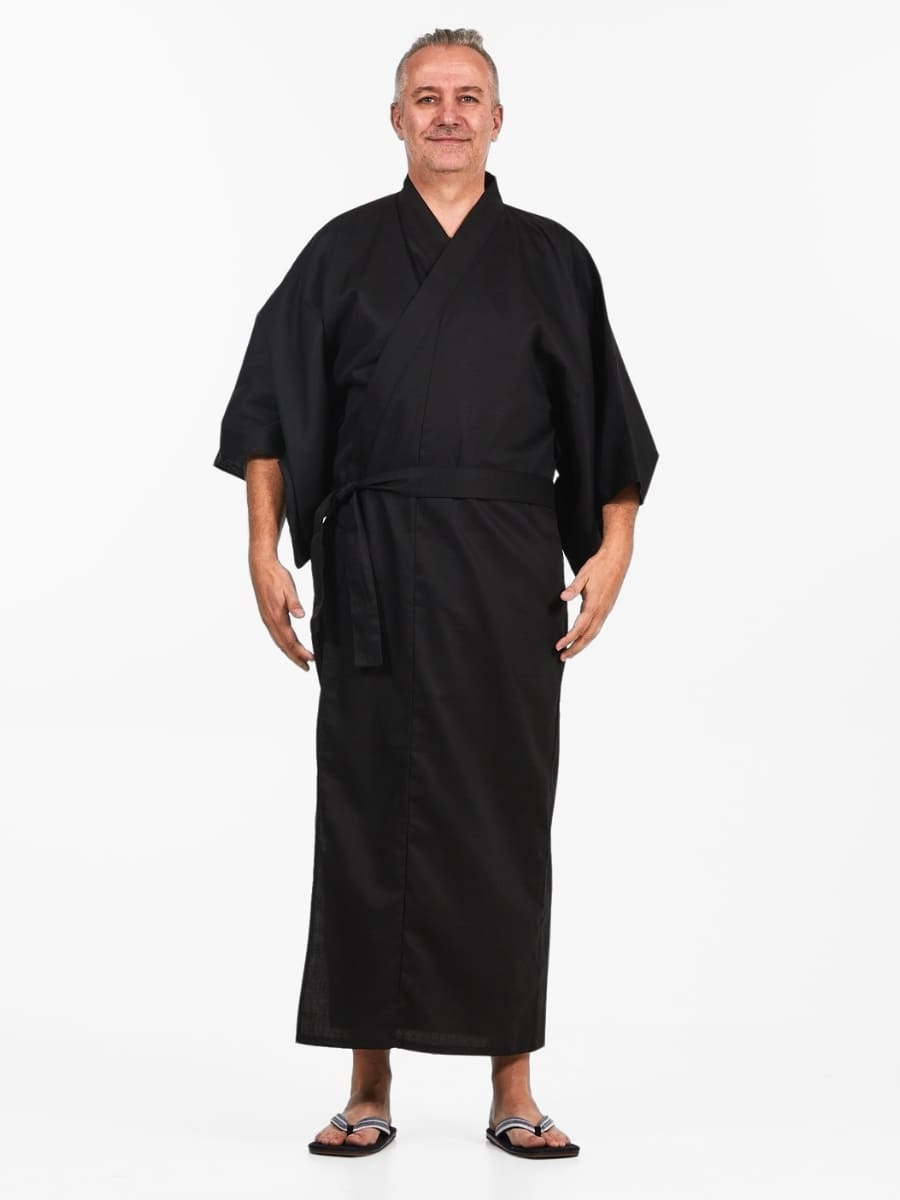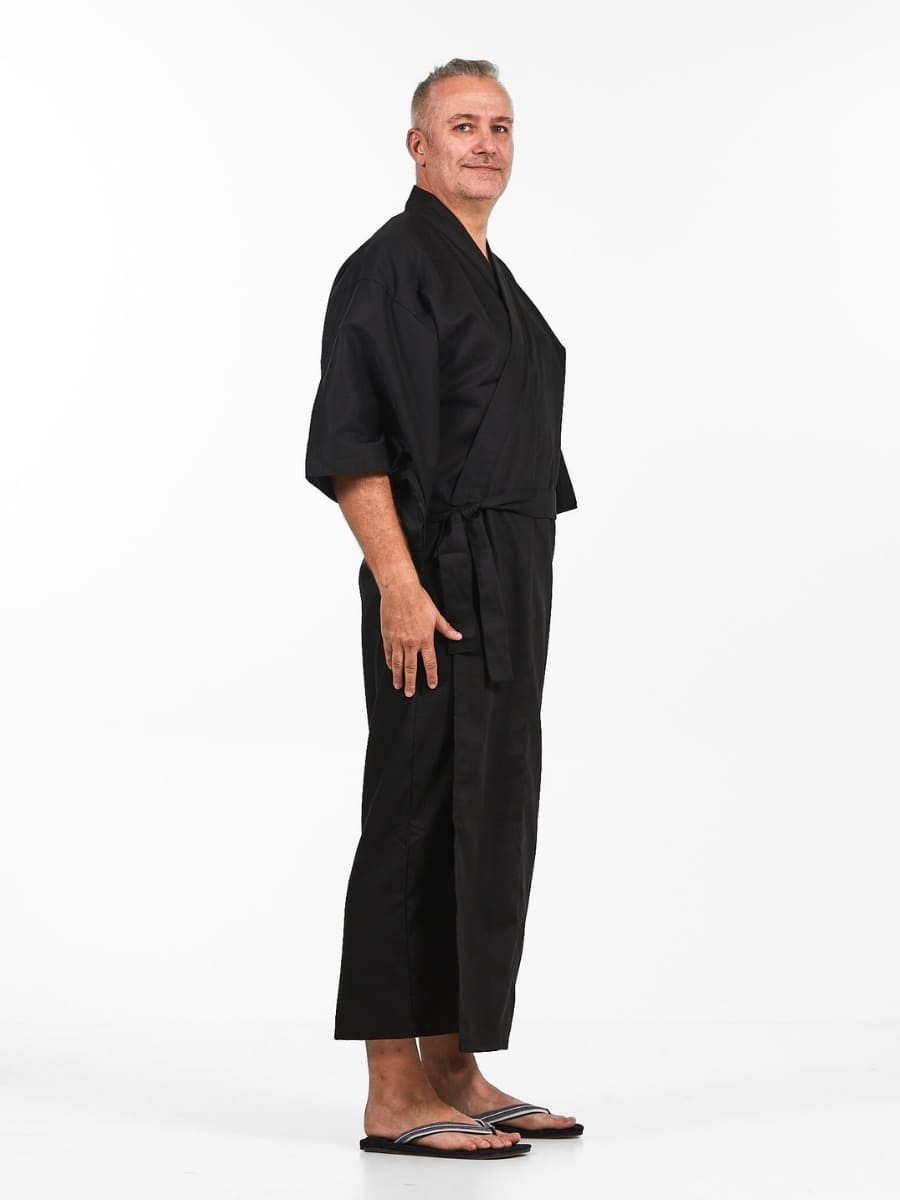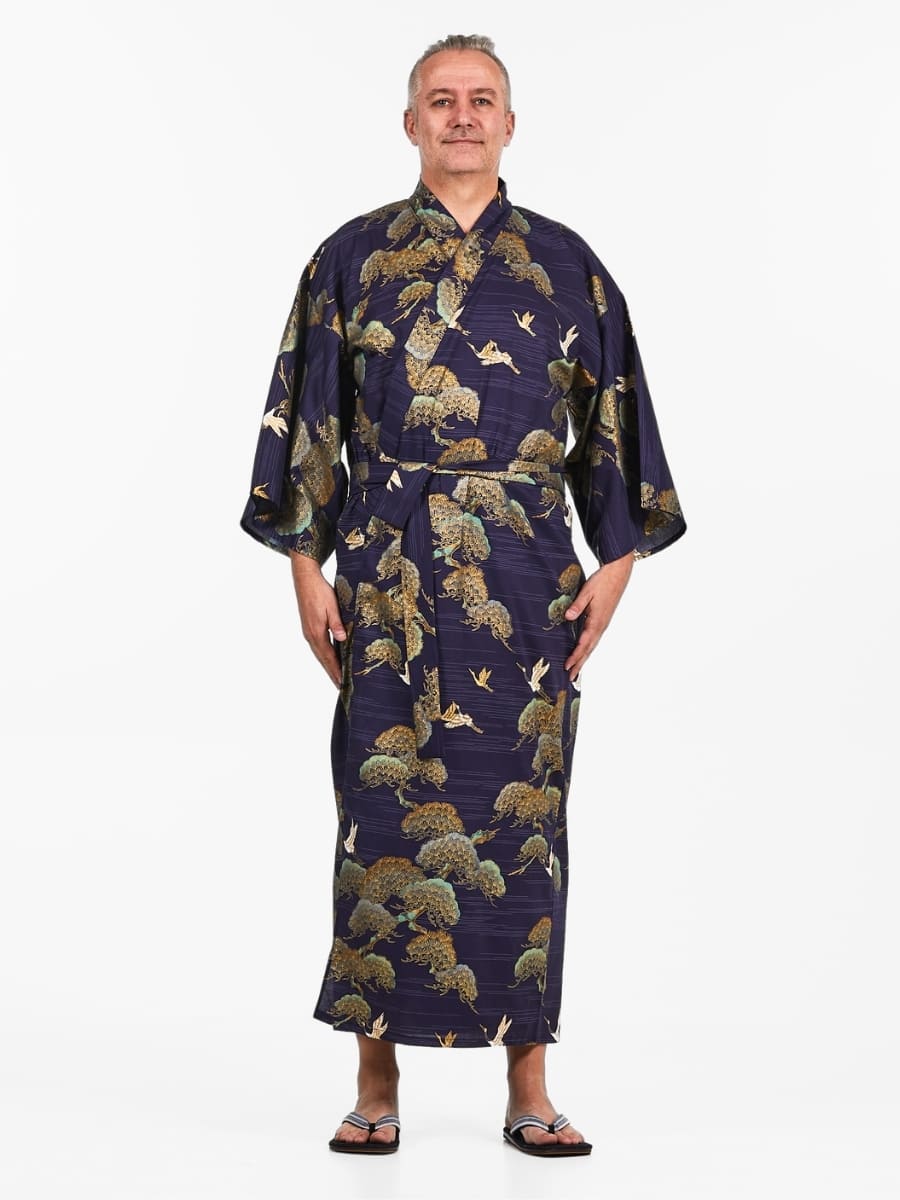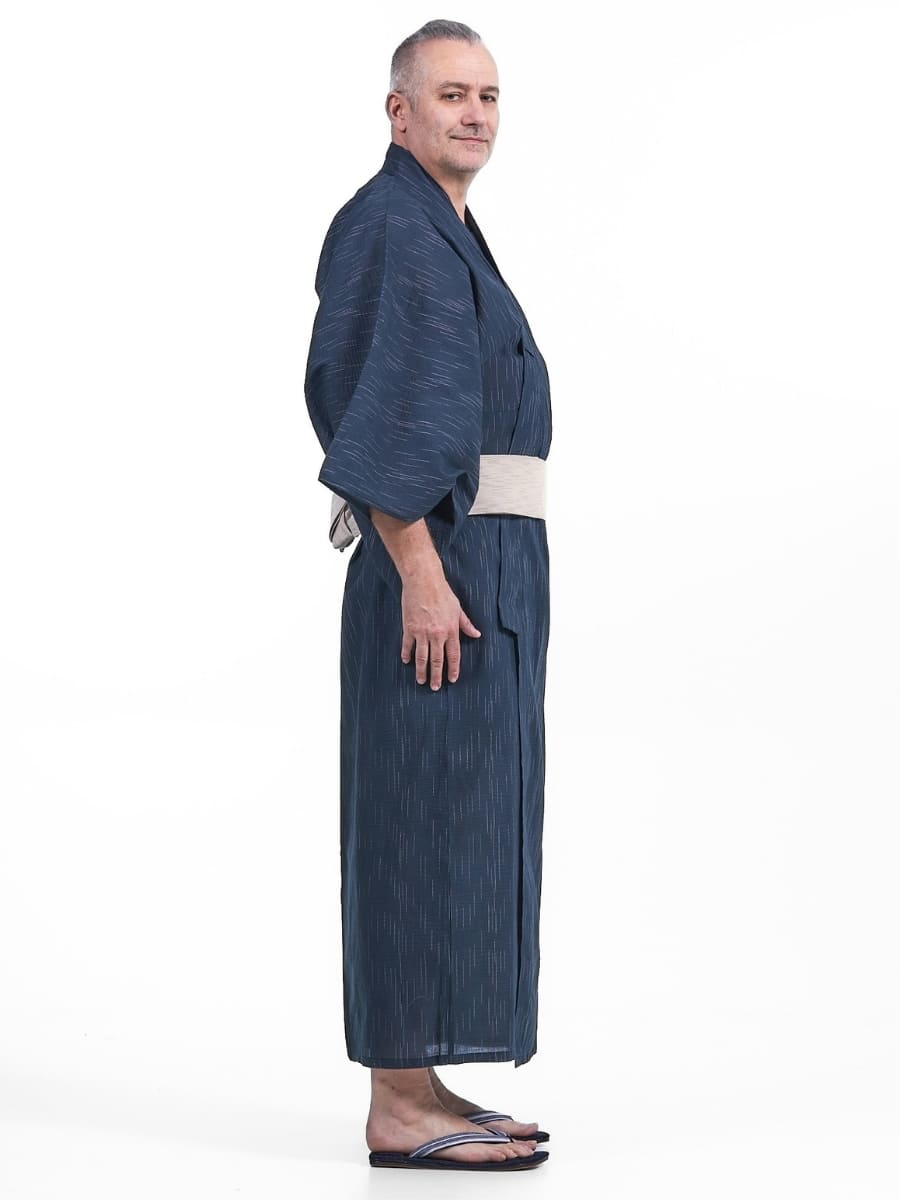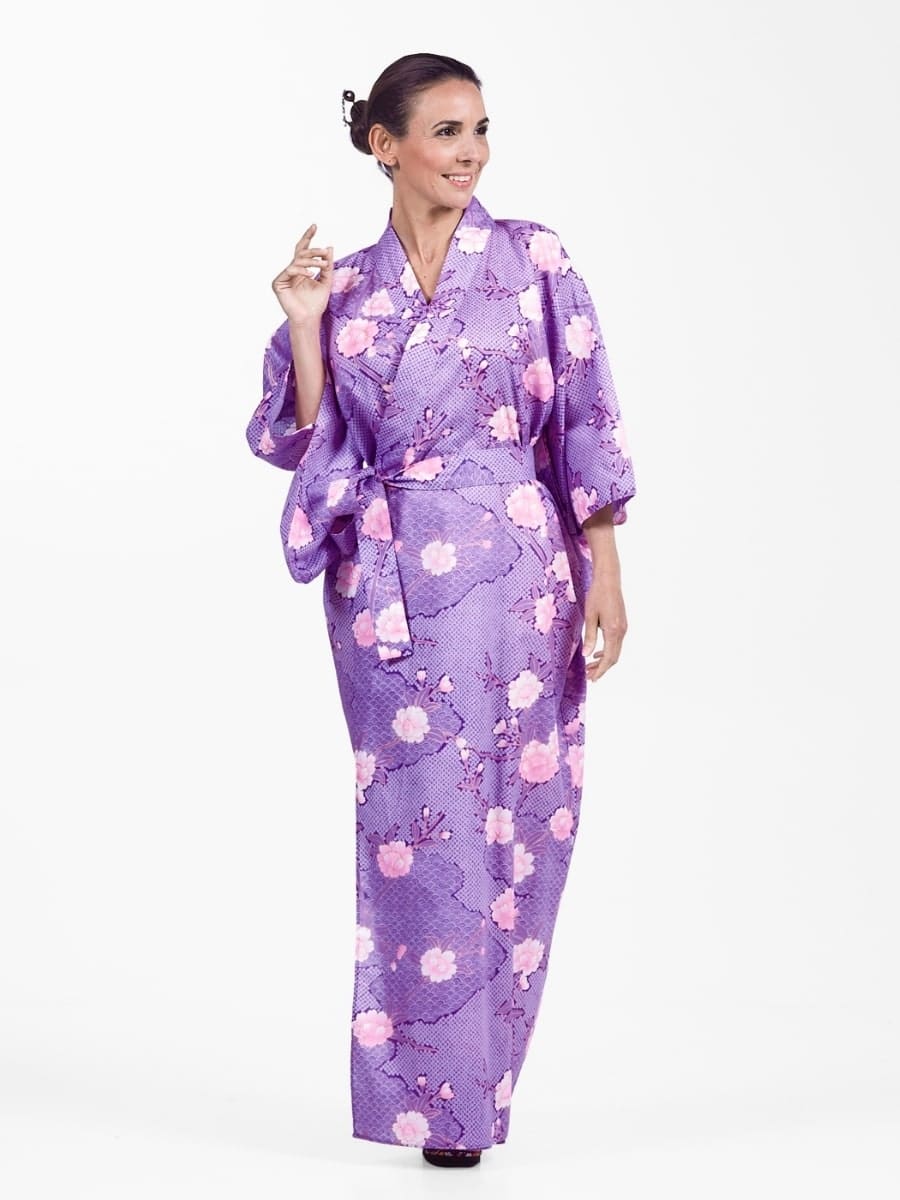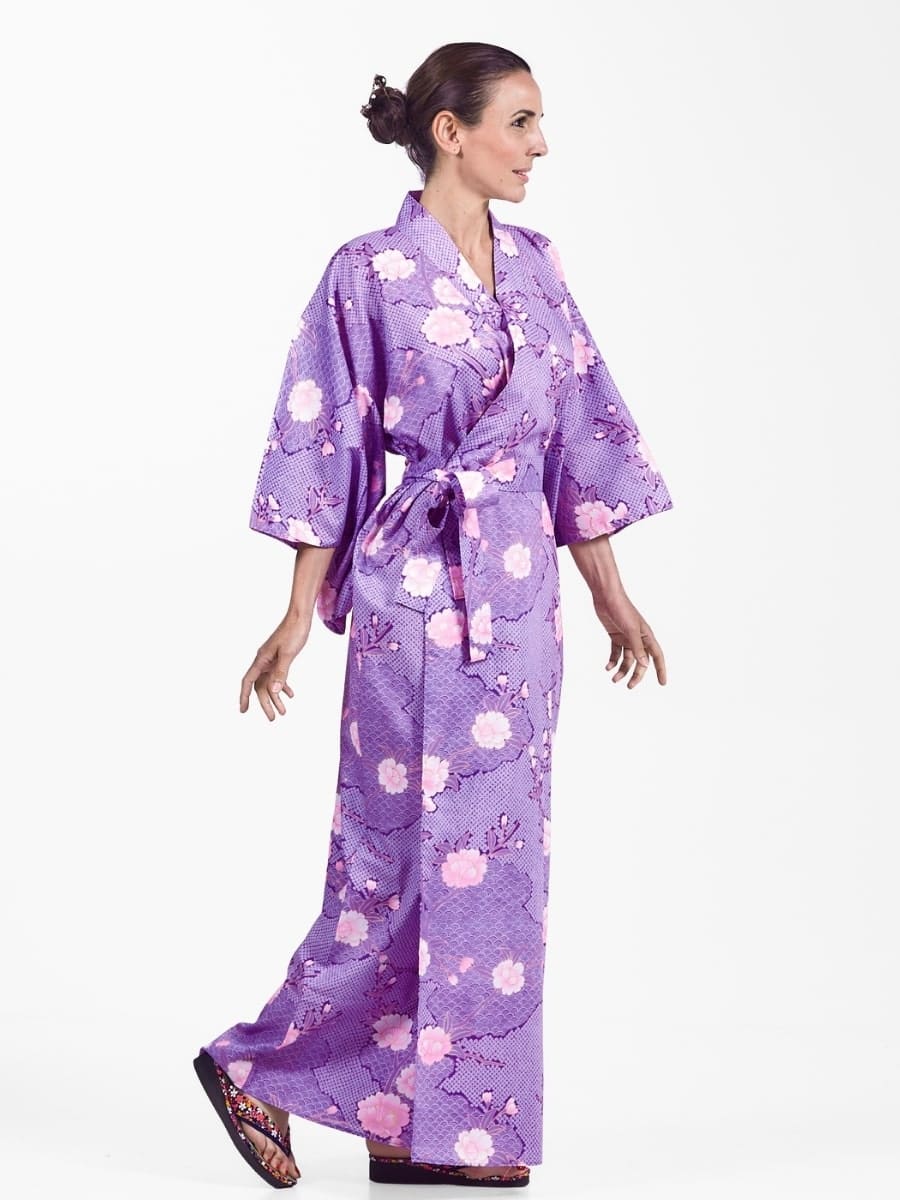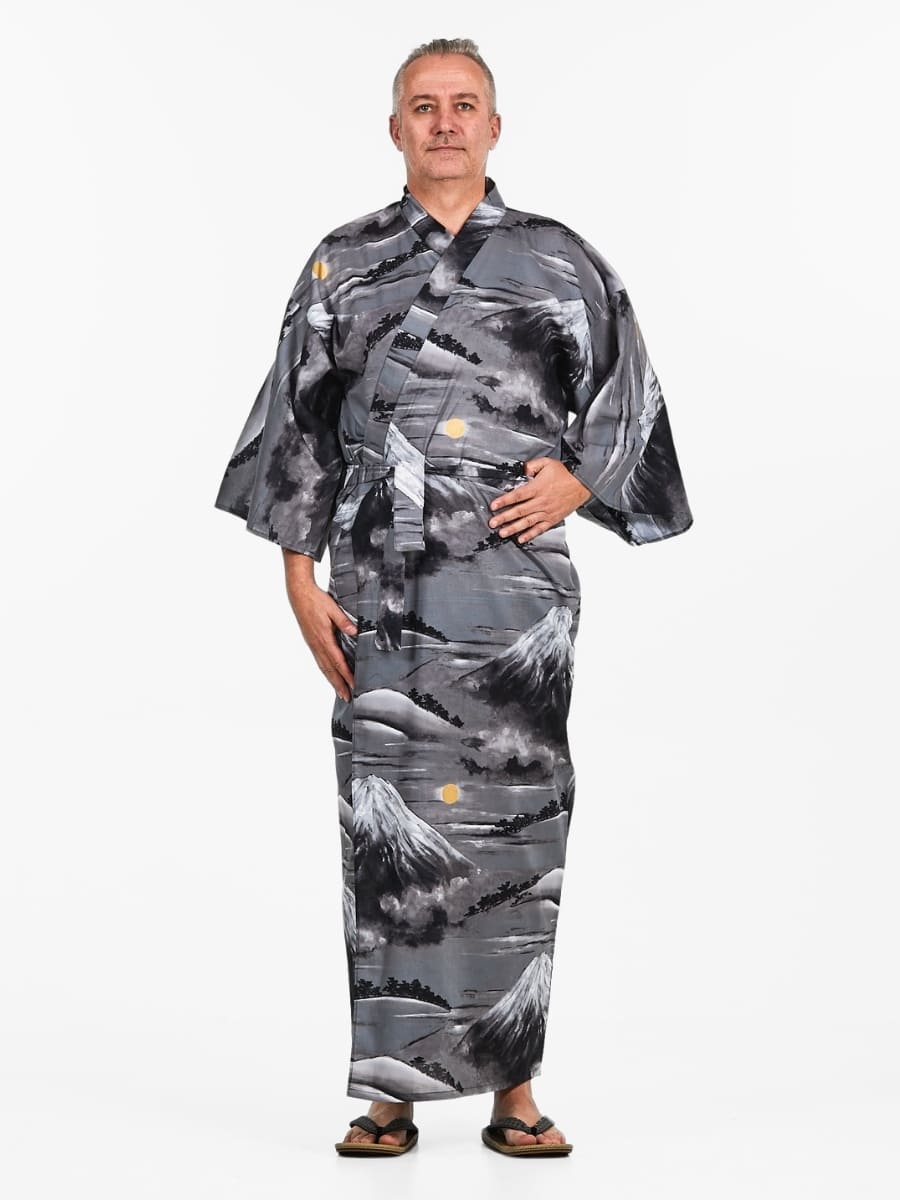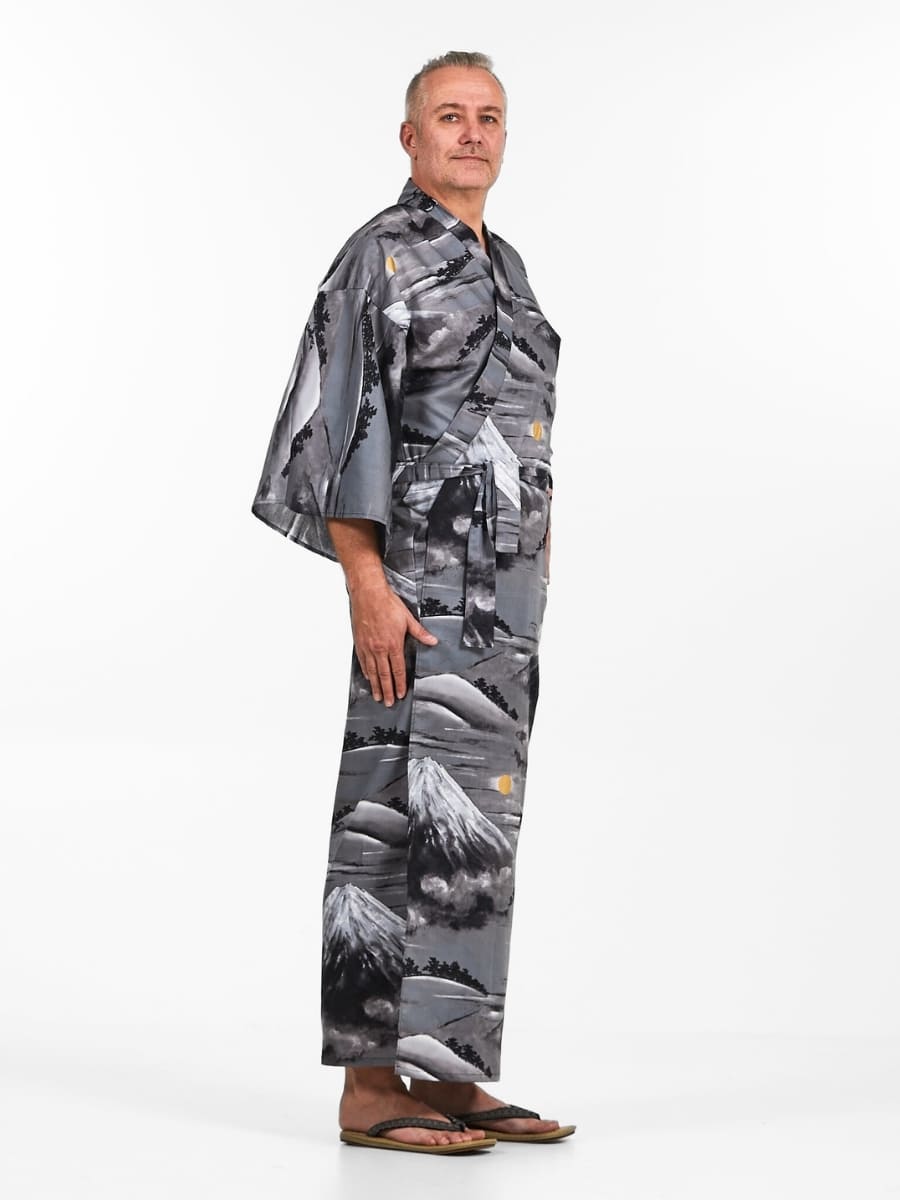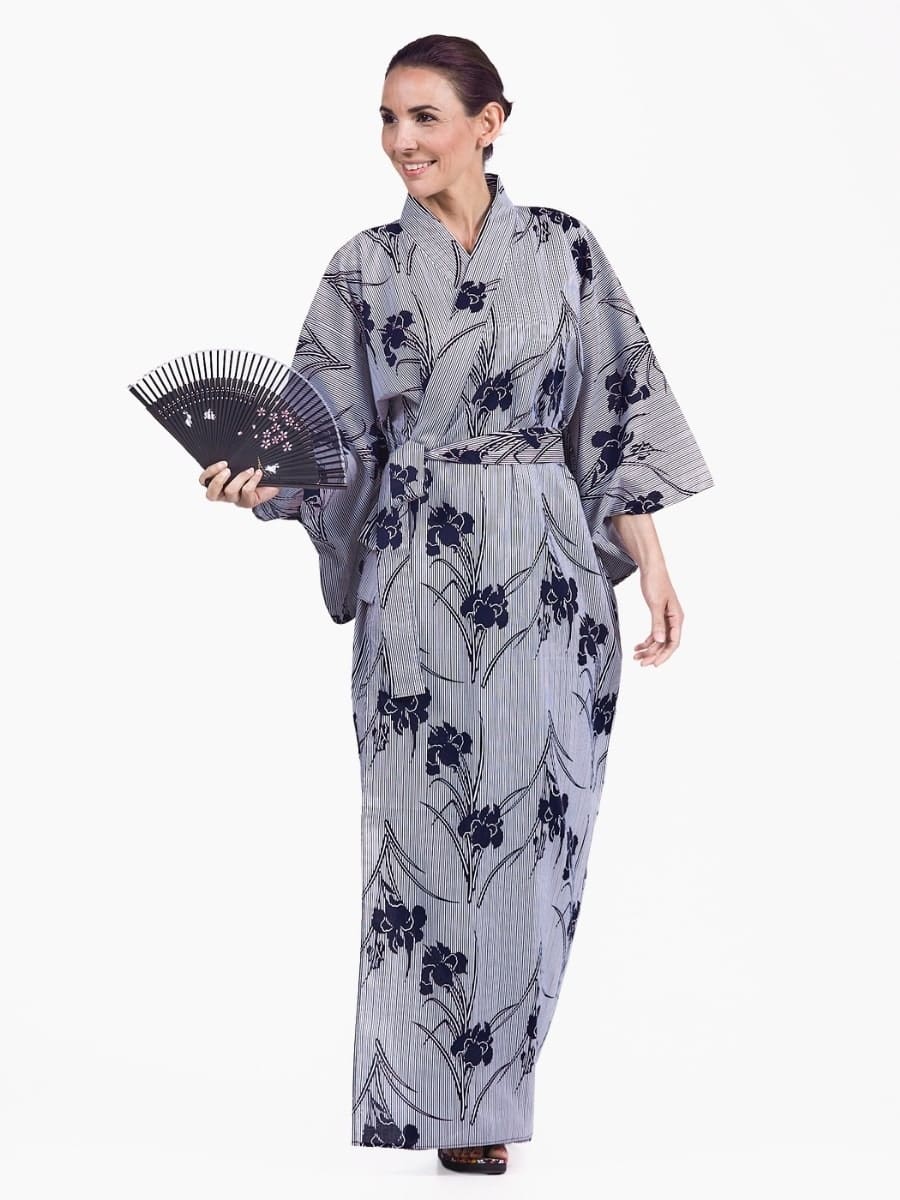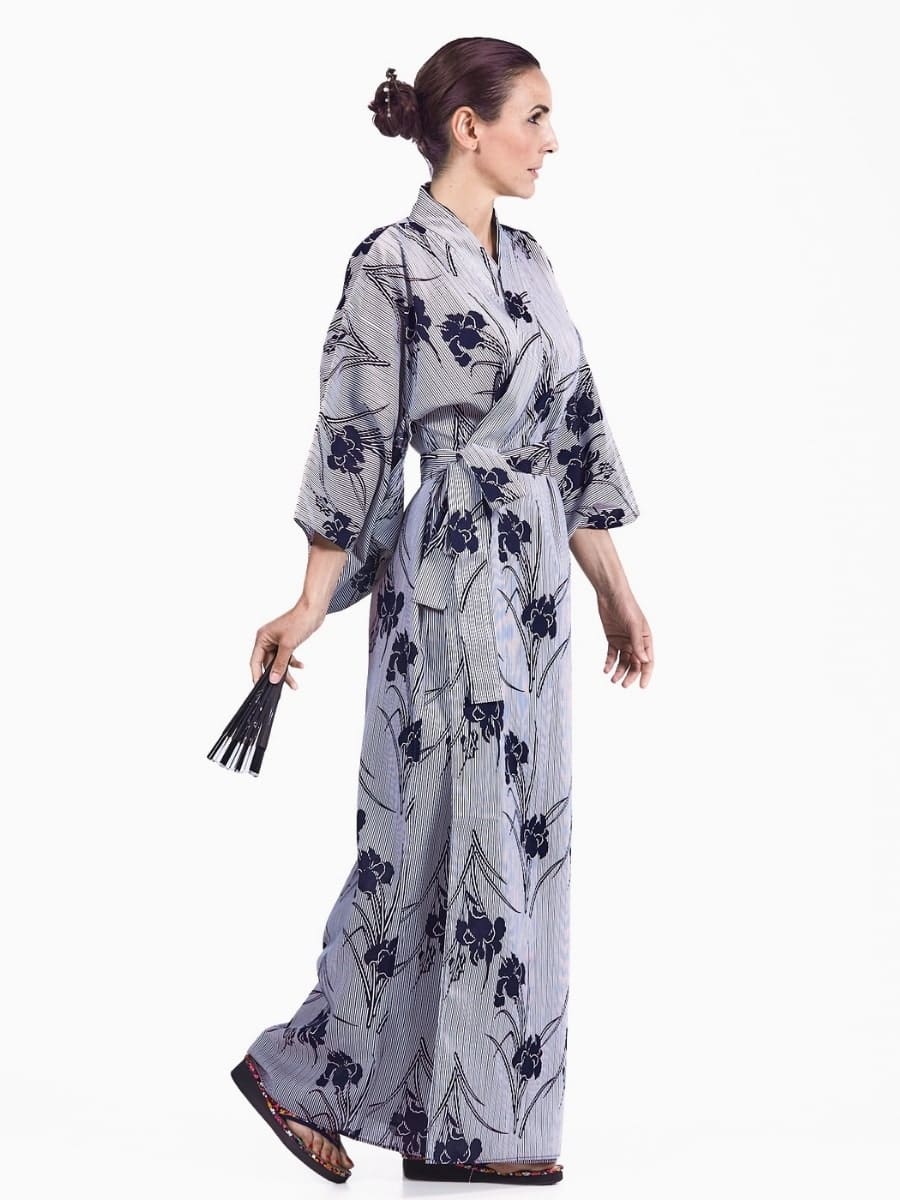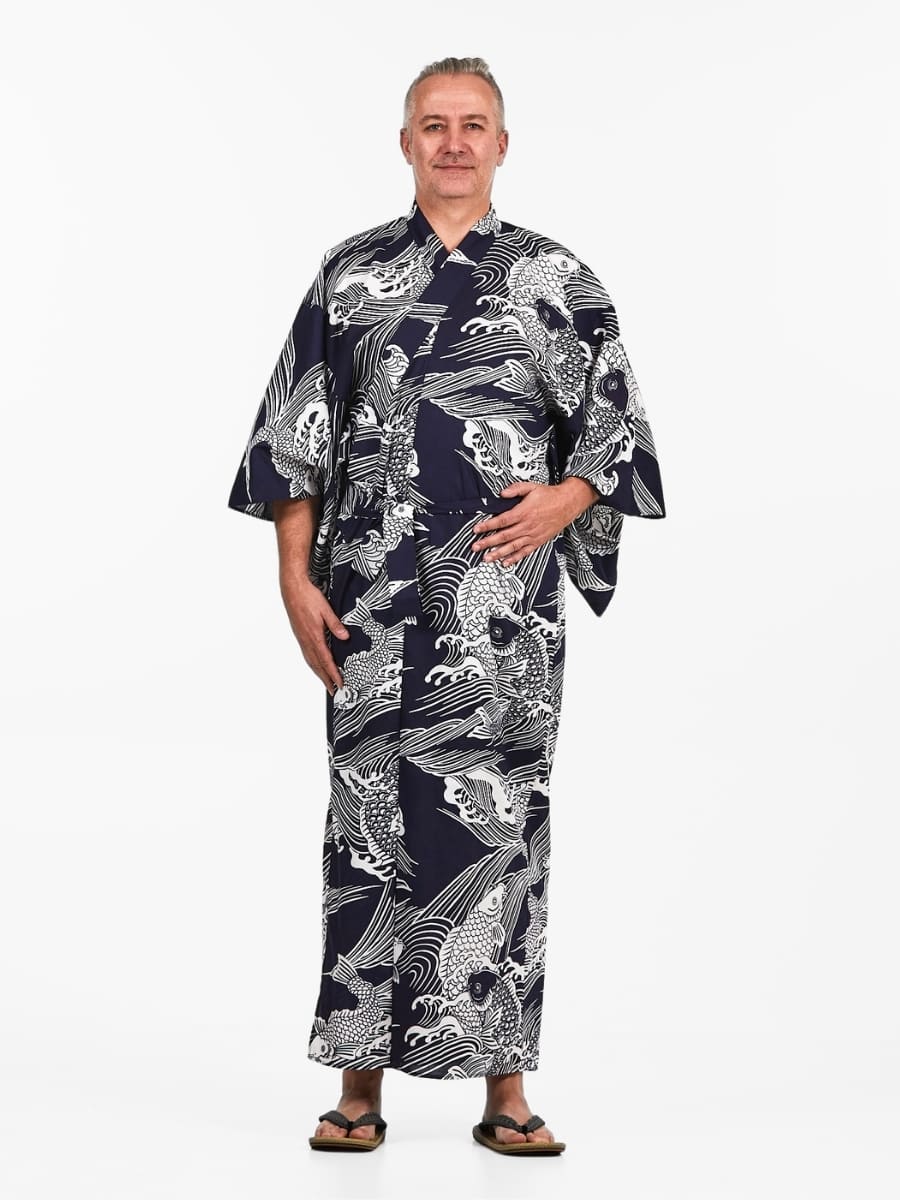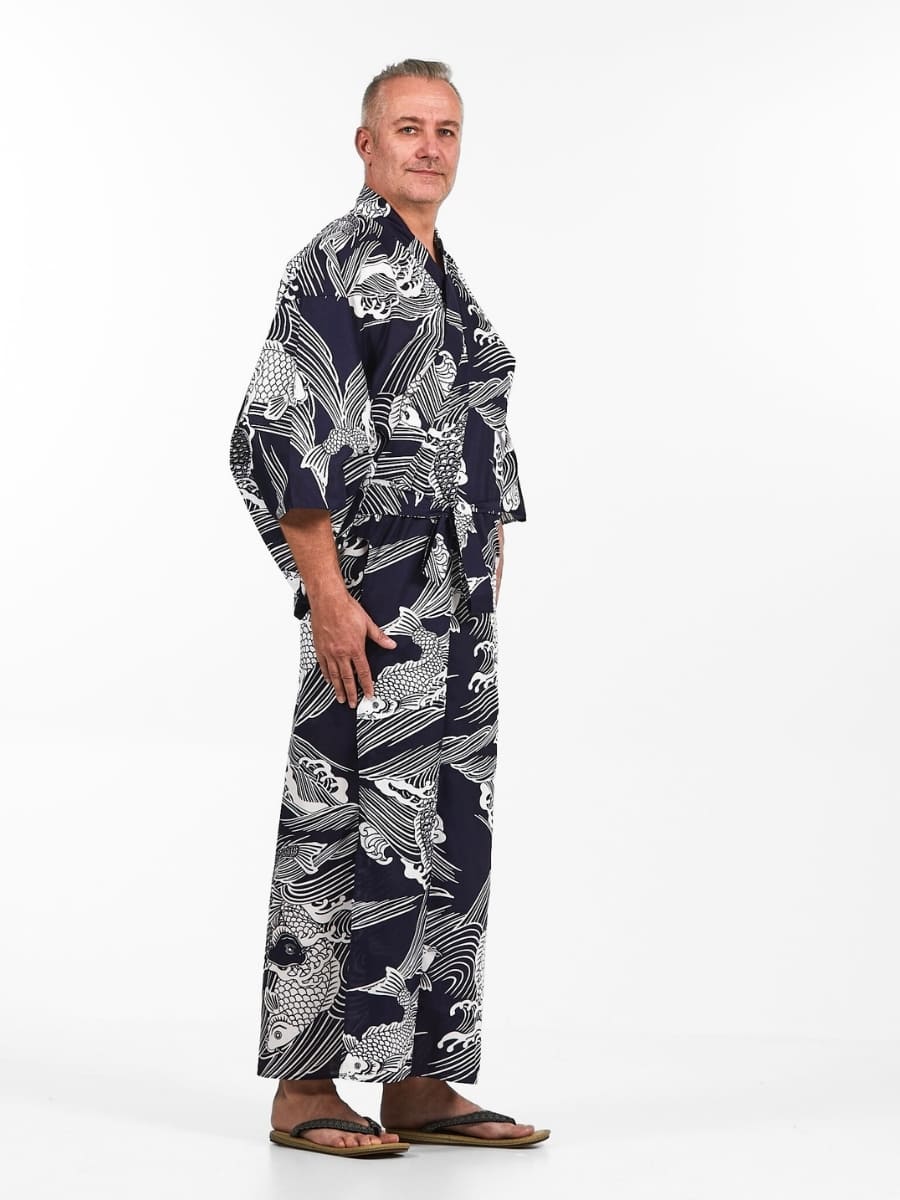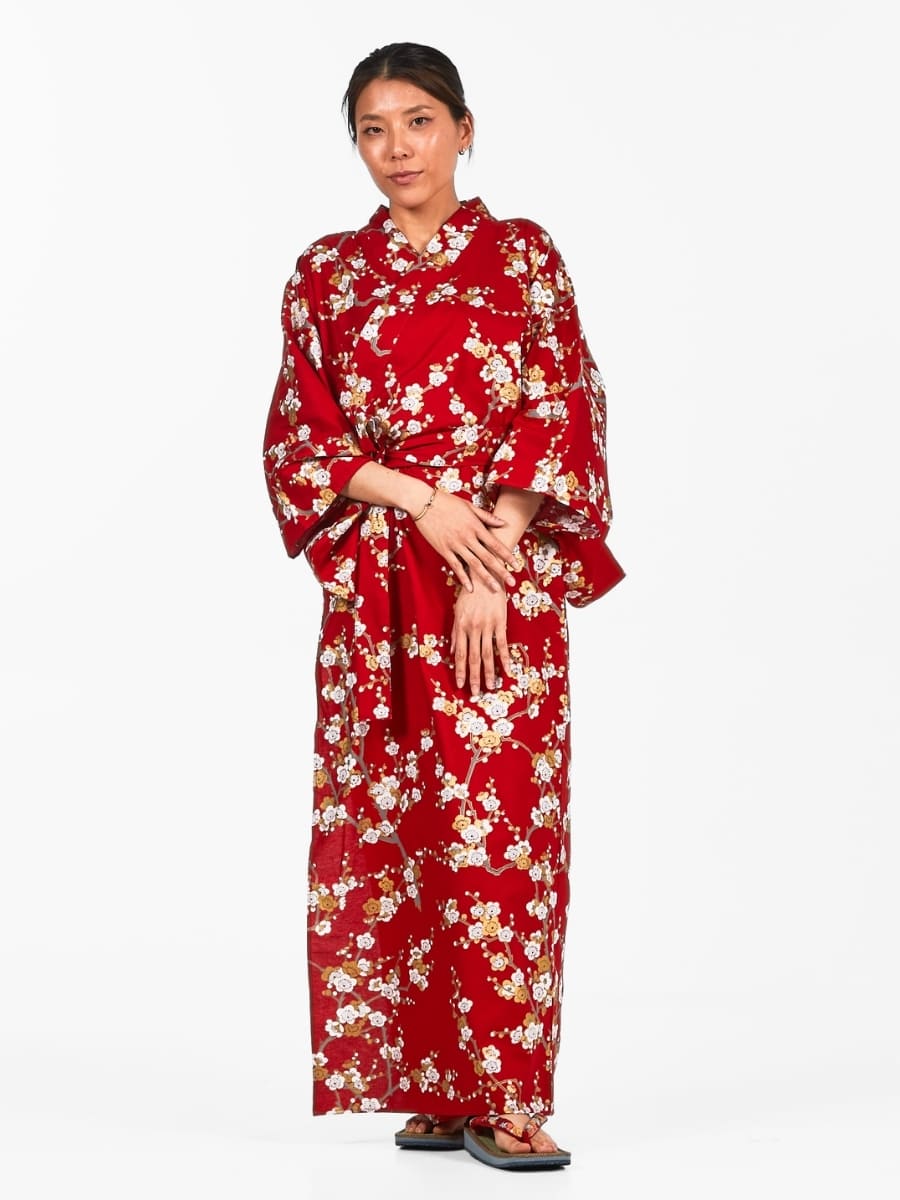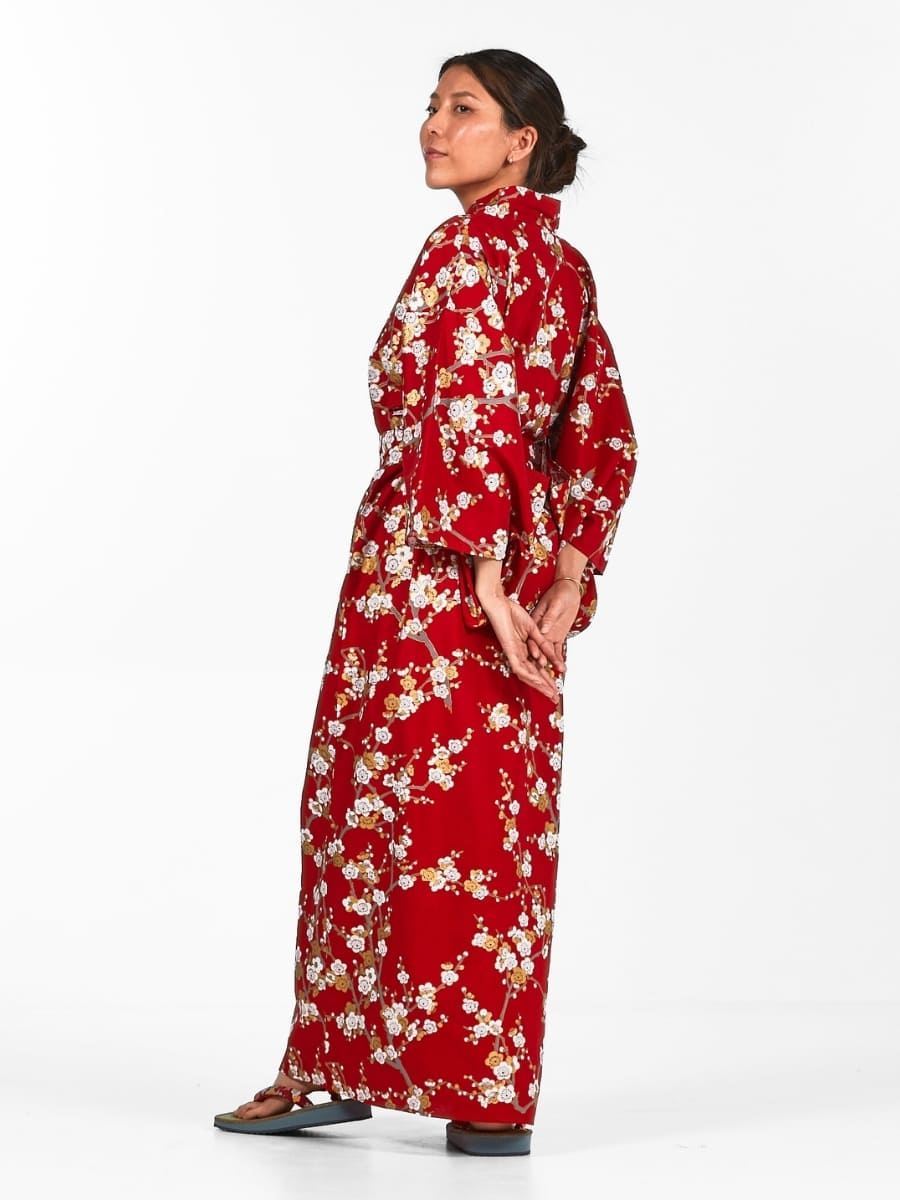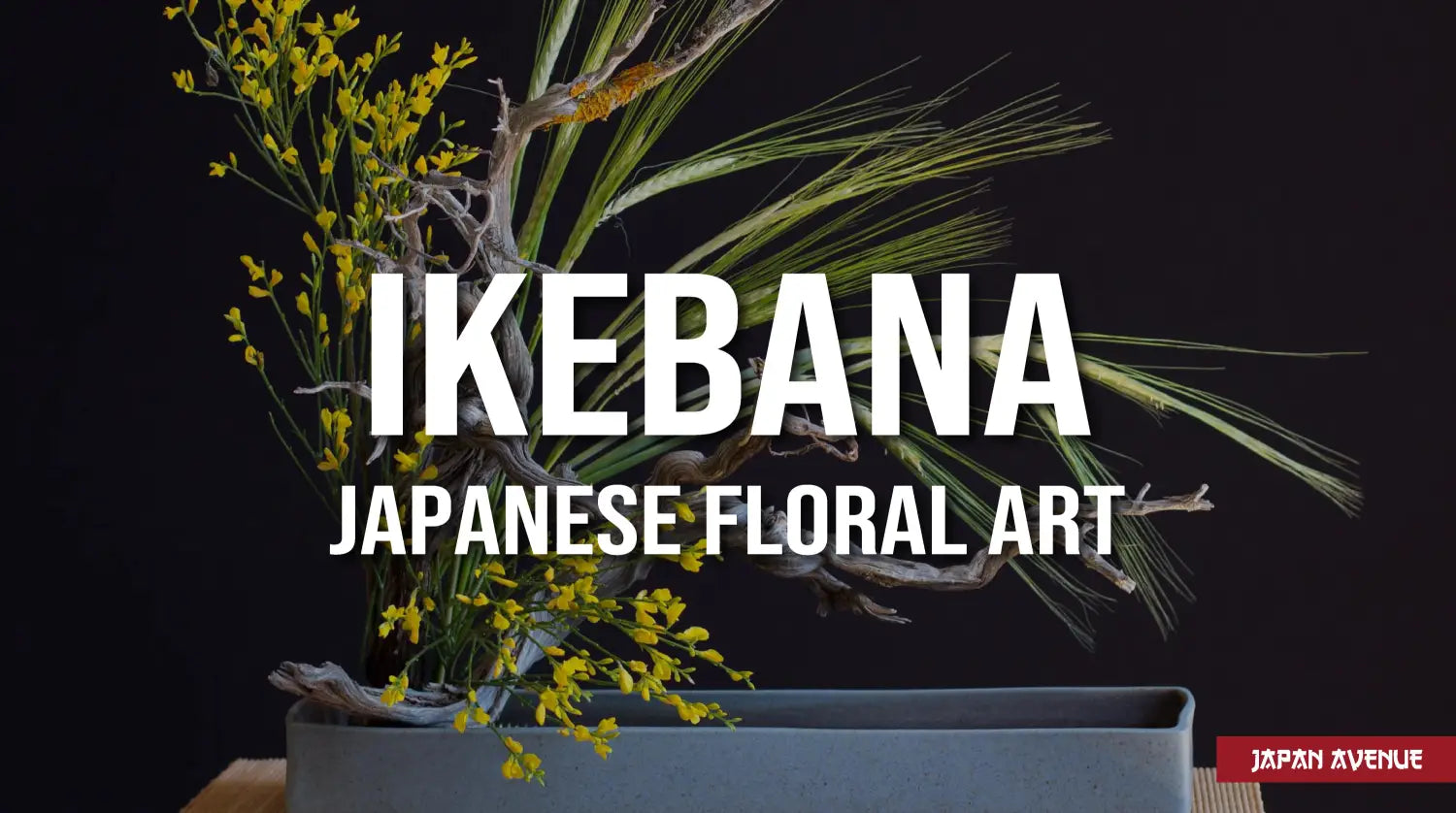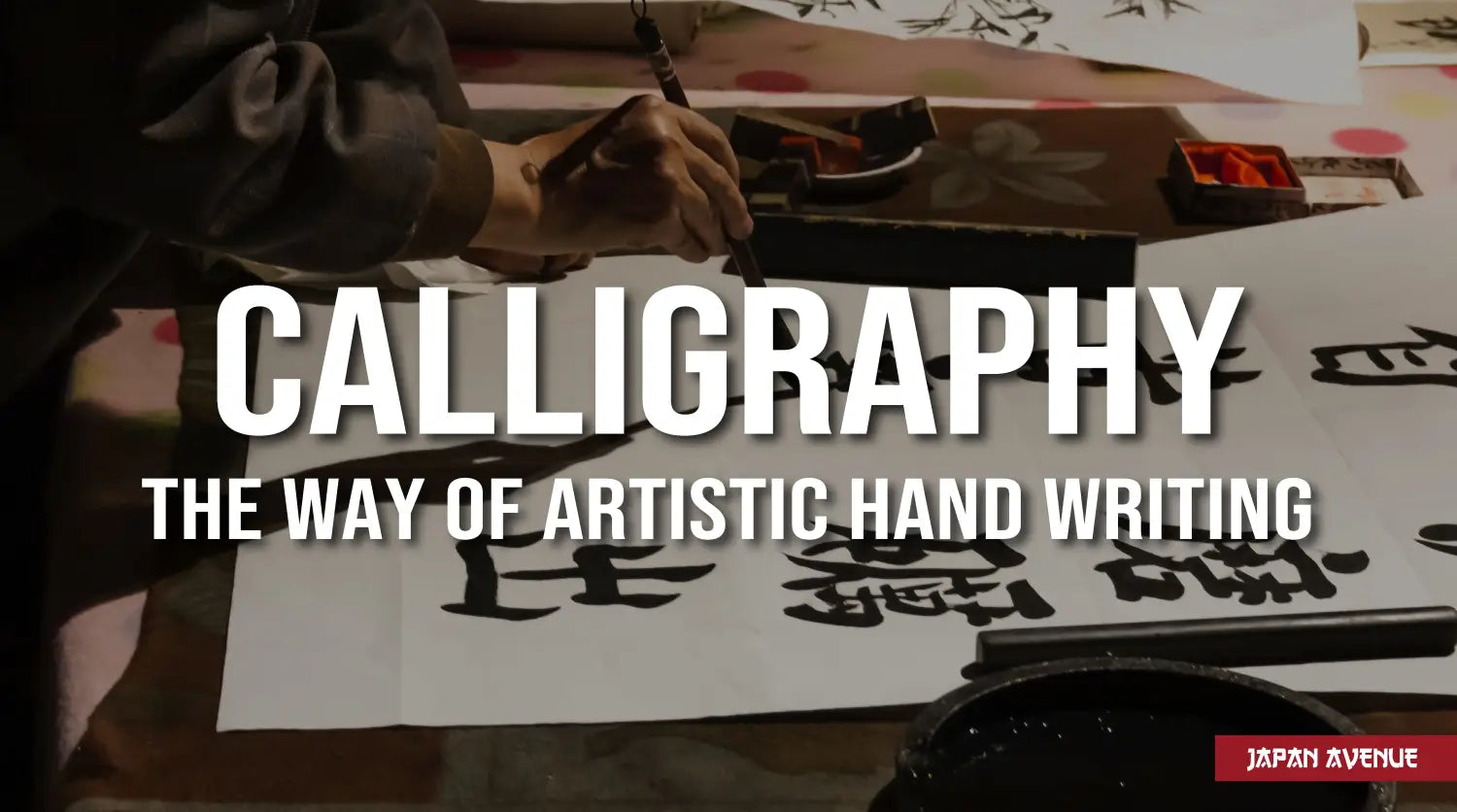Whether reserved for special occasions or worn just for fun, the kimono is a source of pride in Japan. As a symbol of Japanese culture, this elegant garment remains the official ceremonial outfit.
The kimono is a traditional Japanese clothing, which is long and flowing, with large sleeves, crossed on the front and maintained by a belt. This dress-like piece of clothing represents much more than just a simple outfit in the Land of the Rising Sun.
What is the history of the Japanese kimono? How to wear it and how to take care of it? Let's focus on this highly esteemed traditional Japanese outfit.
📜 History of the Japanese kimono

Photographs of Japanese men wearing kimonos in the 1870s ©Australian National Library.
The kimono used to be an everyday garment. Its origins date back to the seventh century when Japan was under the influence of the Tang Dynasty. Before becoming the elegant traditional Japanese garment that we all know, the kimono has evolved a lot.
At the beginning, it was more of an undergarment called a kosode, inspired by China during the Nara era.
Later, during the Heian period, the Japanese departed from the Chinese model and introduced their own more refined style of kimono. Osode is the word used for the long-sleeved undergarment contrary to the kosode with its narrow sleeves.
In parallel, men's and women's models were distinguished and kosodes were adorned with patterns.
It was during the Muromachi period that this garment gained popularity. At this time, it was finally worn outdoors, on top of other layers of clothing. The sense of aestheticism was strengthened and weaving techniques were improved with the appearance of more and more elaborate patterns. Traditional Japanese clothing became more valuable.
In the thirteenth century the kosode was named kimono. Its look evolved during the Edo period and took its present form with its long sleeves. Nowadays, it is a very popular garment, known for its high quality.
Nowadays, Japanese people wear the kimono only for special occasions as western clothes have replaced the traditional outfit. However, some continue to wear it for their pleasure.
Discover in detail how the Japanese kimono has evolved over time.
👘 What is a kimono?

Three Japanese women in front of the wooden door of a temple in Kyoto, Japan. ©Damian Hutter.
From the Japanese "Kiru" which means "to wear" and "mono" which means "thing", its name stands for "thing to wear". A kimono is a long, T-shaped dress with large drop sleeves. It closes with a belt, crossing the two sides one over the other. The left part always on top of the right part. Although this garment is often confused with the one used for martial arts, it is quite different. It is a garment that is worn with traditional strappy shoes like zori (or the less formal geta) and tabi socks.
The kimono is made out of a noble fabric such as silk, but it can also be found in cotton, linen or plant fibers. Rectangular pieces of fabric are assembled without ever being cut. They are woven together through elaborate techniques. This creates relief and colorful patterns depending on the complexity of the kimono. Next, the fabric is colored with natural powders. Techniques of superimposing layers or paintbrushes are used to obtain different effects. Finally, embroidery, golden threads and other ornaments are added before sewing the pieces together.
The kimono is composed of two side parts, long sleeves (sode), a collar and an okumi, (a piece of fabric located on the front, below the collar).
The traditional manufacturing process can be very long, depending on the used techniques, which explains its high cost.
Are you looking for a Japanese kimono for a special event, a trip to Japan or just for fun? Check out our collection of kimono for men and japanese women kimono & find yours!
📌 What is the difference between a yukata and a kimono?

Group of Japanese women in kimono outfits. ©Twinewood Studio.
The kimono is often confused with the yukata, yet, they are two completely different garments. Although they have a similar T-pattern, which is crossed on the front, and the same way of fastening, they are worn on different occasions.
The kimono is the traditional clothing for family events and official ceremonies such as weddings, funerals and tea ceremonies. This luxurious and very expensive garment is worn over a cotton or silk undergarment that protects it.
The yukata, on the other hand, is a lighter garment that is worn in summer, notably during festivals. Its name means "bathing garment" and was once used by Japanese aristocrats. A tradition that continues today in hot water springs and traditional hotels where they are used as room clothes. This comfortable and breathable garment is often made of cotton, but also exists in polyester. It is an indoor garment, particularly fashionable in Europe.
In addition, the number of collars, the length of sleeves and the wearing of socks are elements that allow to distinguish these two traditional Japanese outfits.
Discover in detail, the main differences between the kimono and the yukata.
💁♀️ Who wears the kimono?

Japanese bride and groom in traditional kimono, leaving a temple. ©Yoav Aziz.
The kimono is an outfit worn by men and women for weddings, funerals, graduations and coming-of-age rituals. It can also be worn to celebrate New Year's Eve, attend traditional art activities or for special occasions. It is an outfit worn for tea ceremonies, ikebana, traditional dances or artistic performances. Also, some professions require this traditional clothing. For example for geishas, sumo wrestlers and kabuki actors. Lastly, children wear the kimono during the Shichi-go-san, a very well-known Japanese festival.
Each kimono has its codes. Young single women wear a furisode, a garment with very long sleeves. Geishas are recognizable by their long kimono with a train, more or less colored according to their age. The bride and groom wear very typical kimonos: a black suit with a kind of skirt called a hakama and a white tie for the men; a white kimono combined with an imposing headdress for the women. During funerals, black clothing is appropriate.
Nowadays, Japanese people exchanged their kimono for western clothes or yukata in summer, which are more comfortable and convenient to wear. Only a few women, especially the older ones, continue to wear the kimono on a daily basis. And not more than one out of two Japanese people owns this luxurious garment. However, kimono rental has become quite common for celebrating special occasions without spending a lot of money. It is worth noting that kimonos are a family heritage, handed down from generation to generation. Moreover, some proudly display the coat of arms of the clan that the family belonged to.
🤔 How to put on a kimono?

Three women in Japanese kimono, Asakusa, Tokyo ©Hiu Yan Chelsia Choi.
The kimono is a very prominent garment which is not easy to put on. It is an outfit that requires several japanese accessories to be properly maintained. The art of wearing a kimono, called "Kitsuke" is a part of traditional Japanese education. It is taught by parents and even in some specialized schools.
- First, we put on a nice pair of traditional white socks called tabi in Japan.
- A susoyoke (underskirt) and a hadajuban (thin cotton top) are worn over the underwear.
- Then, we put on a nagajuban, a kind of dress made of a lightweight fabric that provides an extra layer to protect the kimono from perspiration.
- A koshi-himo (a kind of cotton belt) is placed under the chest to close the nagajuban and a small rigid band called an erishin is placed in the hem of the collar to give it a neat appearance.
- A date-jime (belt) is attached above the koshi-himo.
- Put on the kimono and make sure it is well centered. The seams of the collar should be parallel to the nagajuban. You may use a clip to hold the collar in place, without raising it too much on the neck.
- The left side is crossed over the right side. A second koshi-himo will be used to tie the kimono at the waist.
- We adjust the kimono by folding the excess of fabric on the koshi-himo and then we tie an obi (traditional belt decorated with embroidery or patterns).
- The collar is put back in place and the last koshi-himo is tied below the chest to keep it in place.
- We then fix the second deta-jime on top of the koshi-himo in order to keep it in place.
- We highlight the waist with an obi that will hide the deta-jime. The knot is tied in the back.
Japanese Kimono : The rules to respect
If you decide to wear your kimono the traditional way, there are some codes to respect. Indeed, this noble dress must be worn with care. You have to make sure that you always cross the left side over the right side, wear white traditional Japanese socks, tie the knot of your obi on your back and wear a nagajuban under your kimono.
Discover the 5 golden rules for wearing the kimono the right way.
🧴 Taking care of the kimono
Did you just purchase a beautiful kimono and wonder how to wash it without damaging it? Some kimonos cannot be washed by yourself, you will have to ask a professional. This is the case for silk kimonos and hand-painted models, for example. However, some cotton or synthetic kimonos can be machine washed. We recommend always looking at the label on the back of your kimono to determine whether it should be hand or machine washed.
Machine wash
To wash your kimono without damaging it (when the label allows it), fold the sleeves of your kimono and place it in a washing net. Use a mild detergent and a suitable program (delicate). For drying, hang your kimono on a hanger and let it air dry in a well ventilated room.
How to fold your kimono?
Before storing your kimono in your closet, you can iron it by taking some precautions. Place a cotton sheet between the iron and the fabric, iron only the inside of the garment and avoid ironing over embroideries and ornaments that might detach with the heat of the iron. Lastly, never spray water directly on the kimono and avoid too hot temperatures.
To fold your kimono properly, lay it on a flat surface and smooth it with your hands. Fold your garment at the collar, all the way down. (The collar should be located on the inside), then overlap the ends and sleeves together. Fold the longest part in half and then in half again. After that, just fold the remaining sleeve under the kimono to obtain a rectangle.
😻 How to properly wear the Japanese kimono?

Young woman wearing a kimono jacket in a tea house ©Rizky Subagja.
As you may have noticed through this article, the traditional wearing of kimono is extremely codified. Moreover, it is chosen according to one's family situation, one's rank and the event in question. However, this Japanese garment has evolved with the times and can be adapted to all styles to the delight of fashionistas around the world. In the West, it is increasingly worn in streetwear fashion.
Discover the best practices for adapting the kimono to your look.
The kimono jacket: A modern piece of clothing
With its flowing fit, loose sleeves and colorful patterns, the kimono jacket can be matched with many styles. You can wear it over your outfit like a long cardigan for a casual chic style or even as an underground outfit. The kimono pairs perfectly with jeans, shorts or a little straight dress. On top, the most daring will opt for a crop-top while others will choose a t-shirt or a tank top.
The kimono can be assembled with sneakers for an urban look. Lastly, for a more formal evening, pair your kimono jacket with a nice straight dress and a pair of pumps.
Once worn as an undergarment, the kimono has evolved over the centuries and has become a true piece of art. More than a simple clothing, this traditional Japanese outfit is a true support of expression with its elaborate weaving techniques, embroideries, patterns and handmade paintings. Today, the kimono is an indispensable piece for fashionistas all over the world. Now that you know absolutely everything about this treasure coming from the Land of the Rising Sun, don't forget to visit our store and find the kimono of your dreams!

